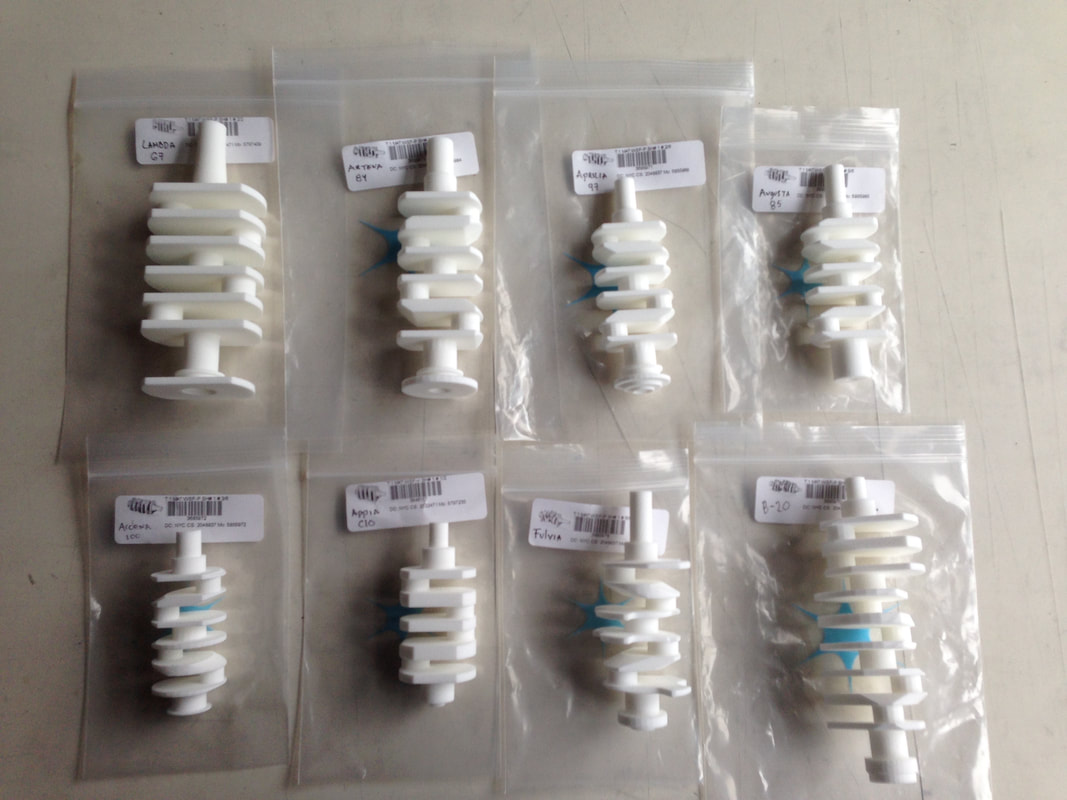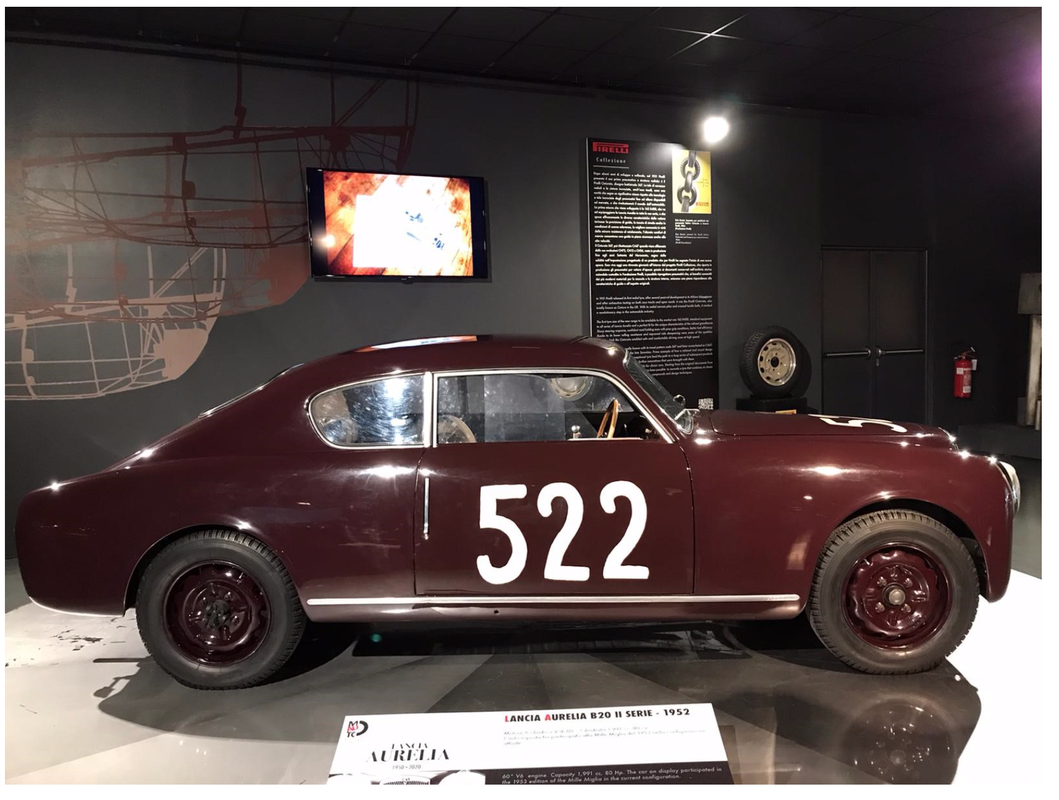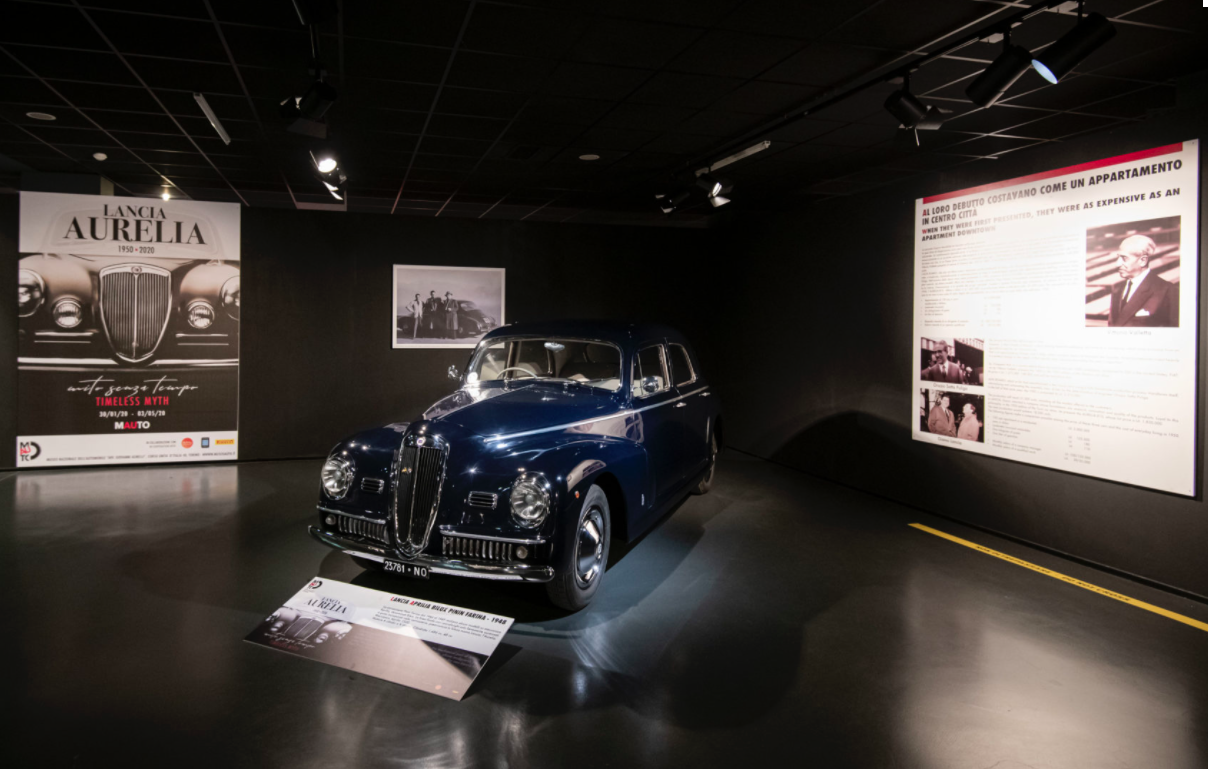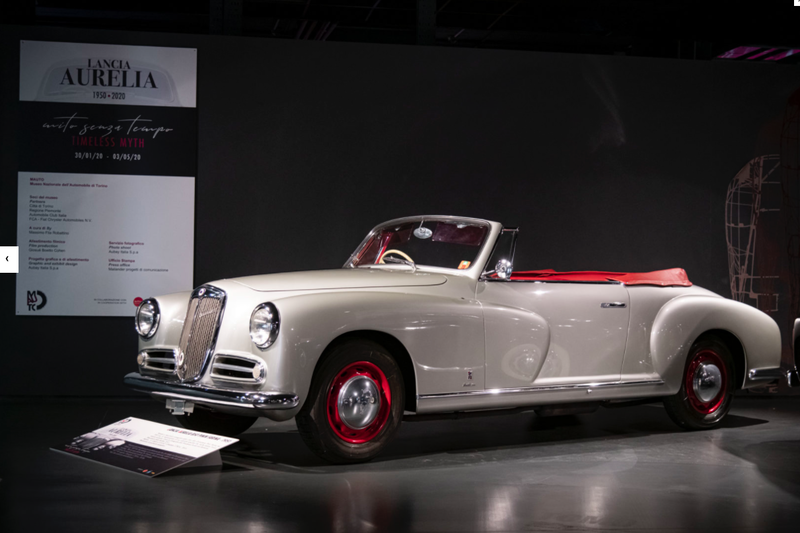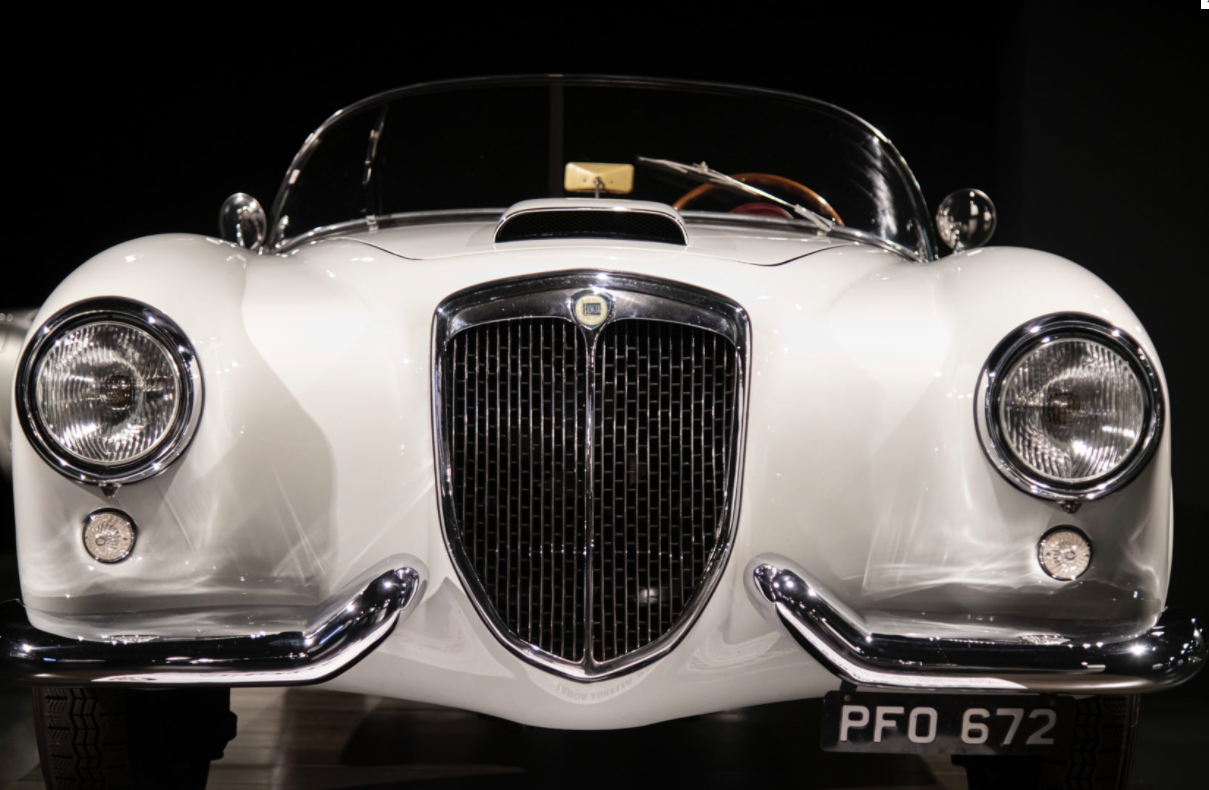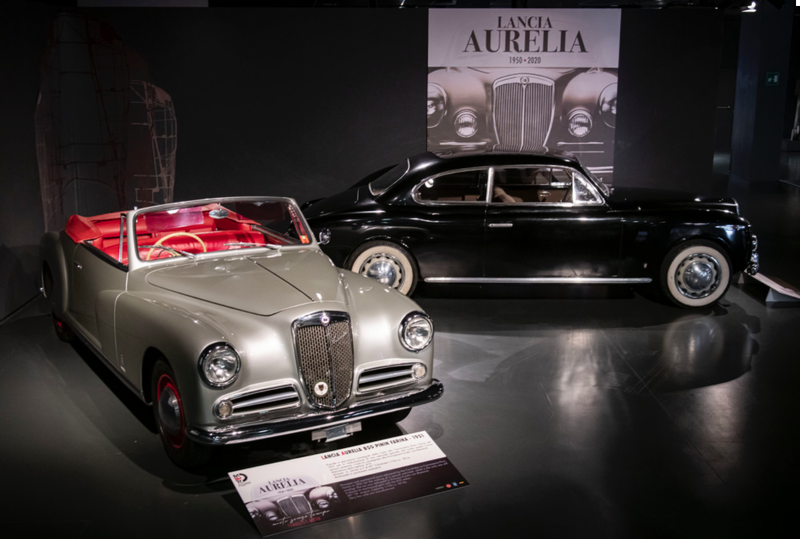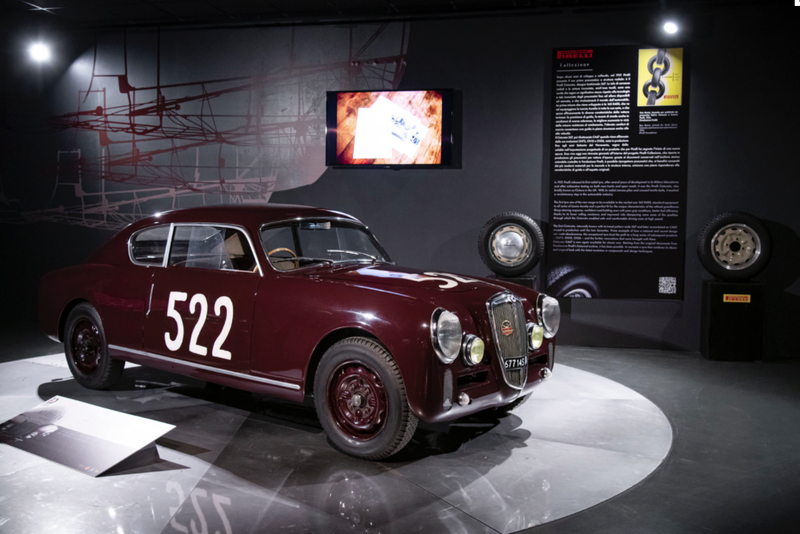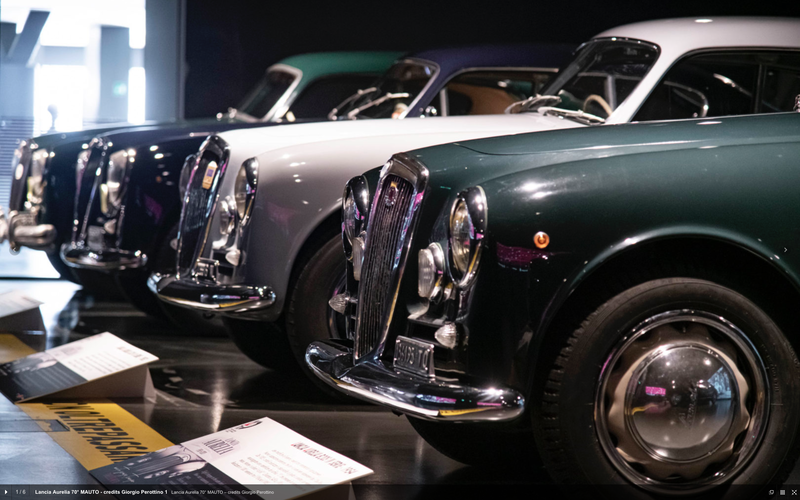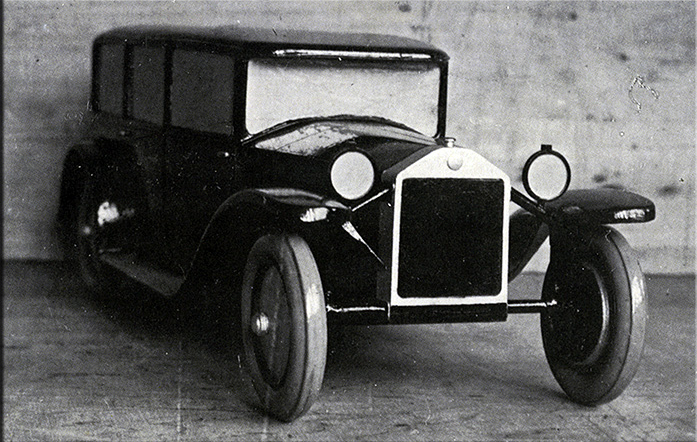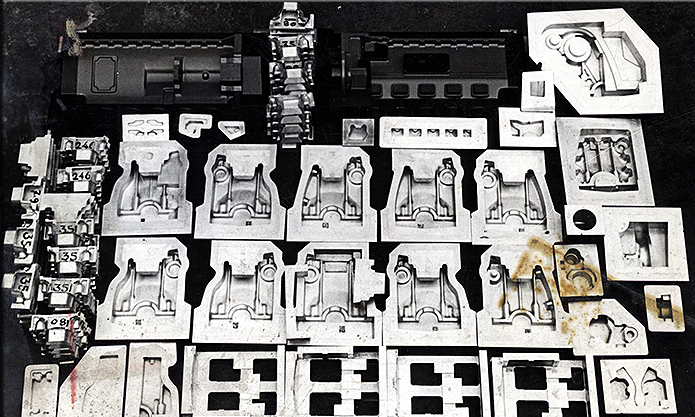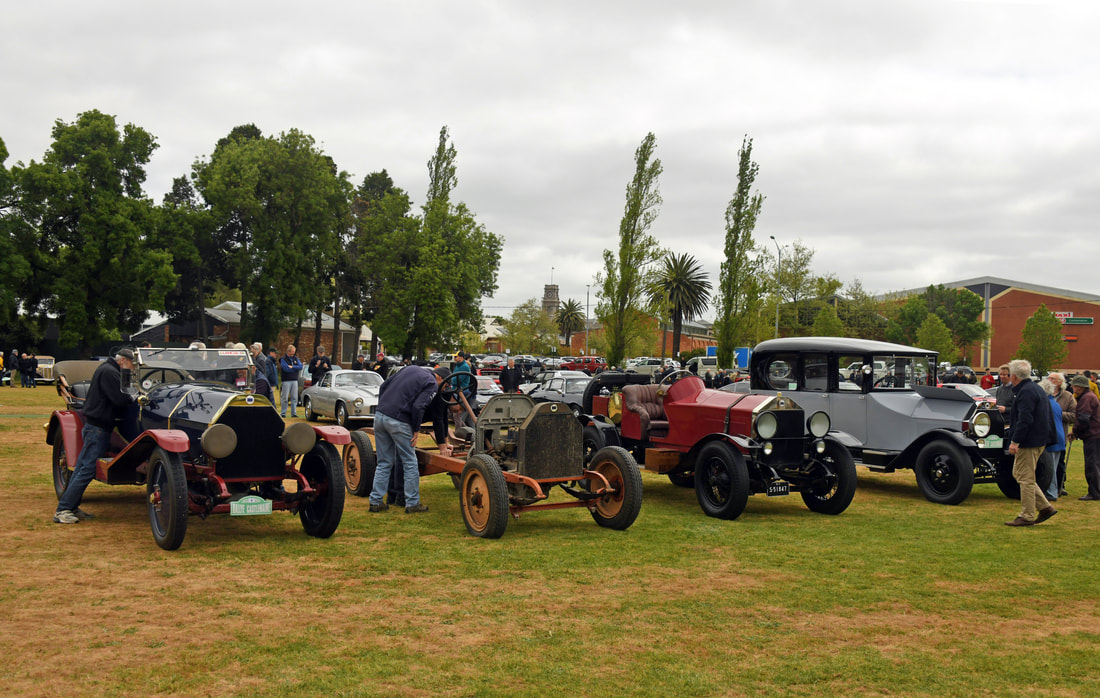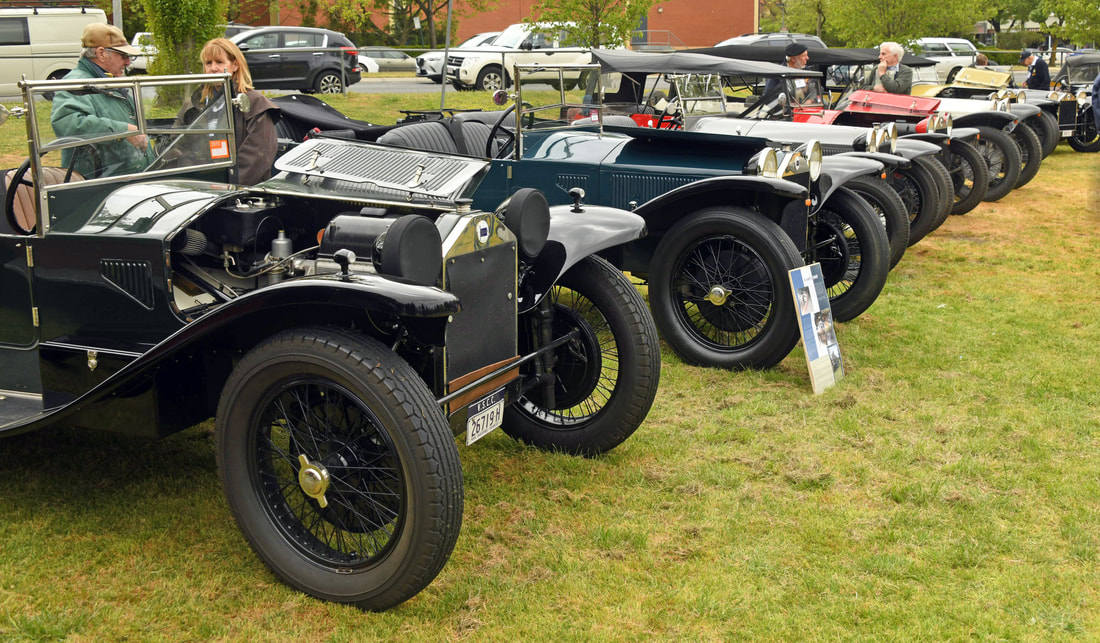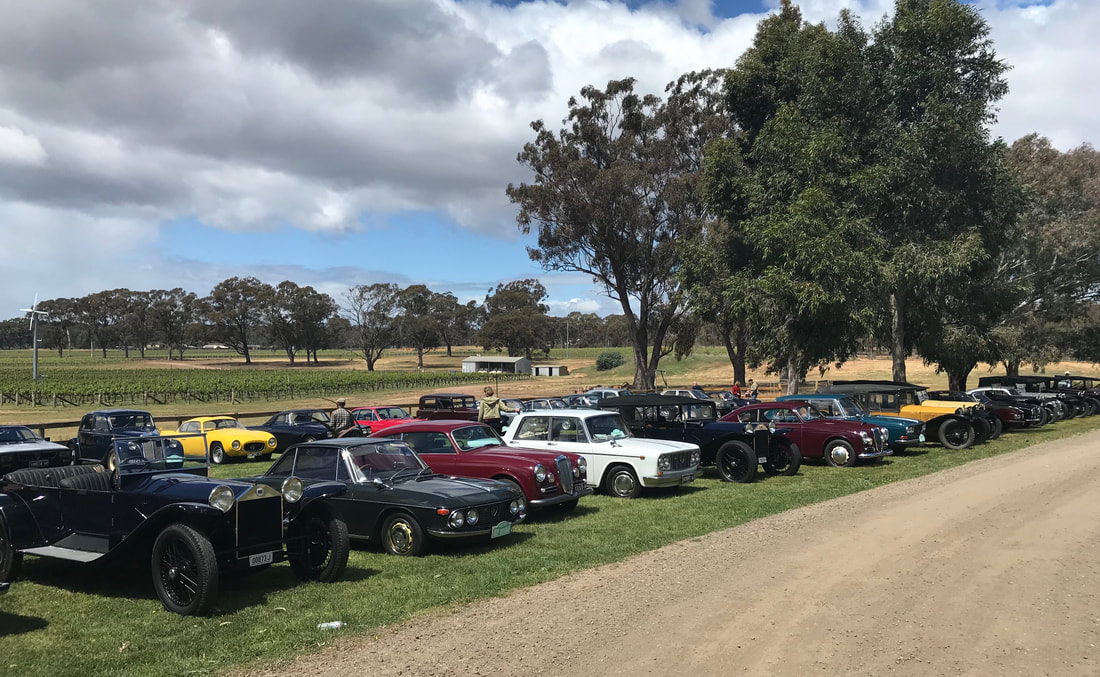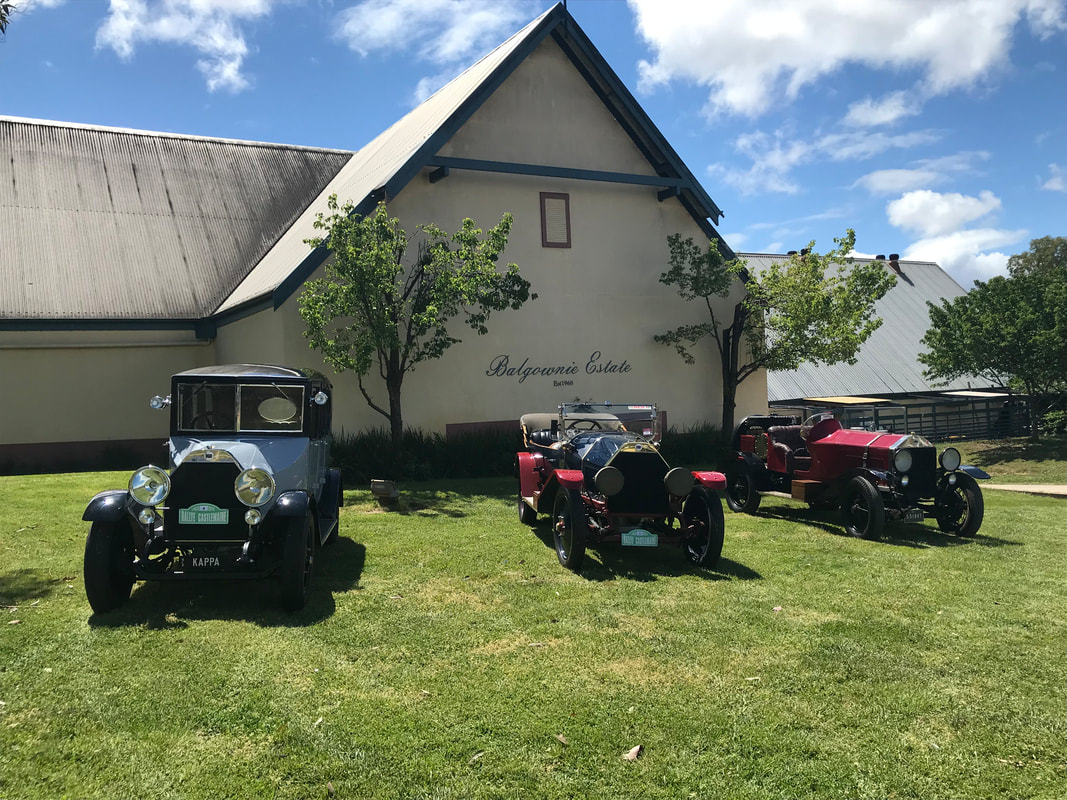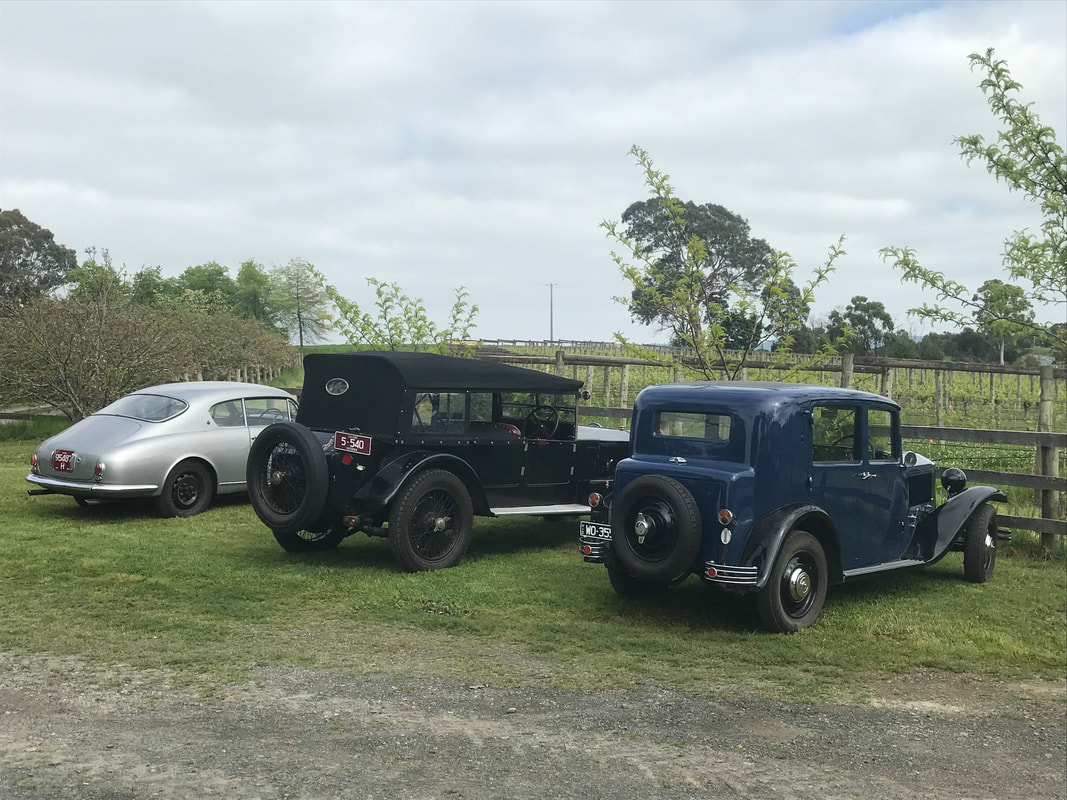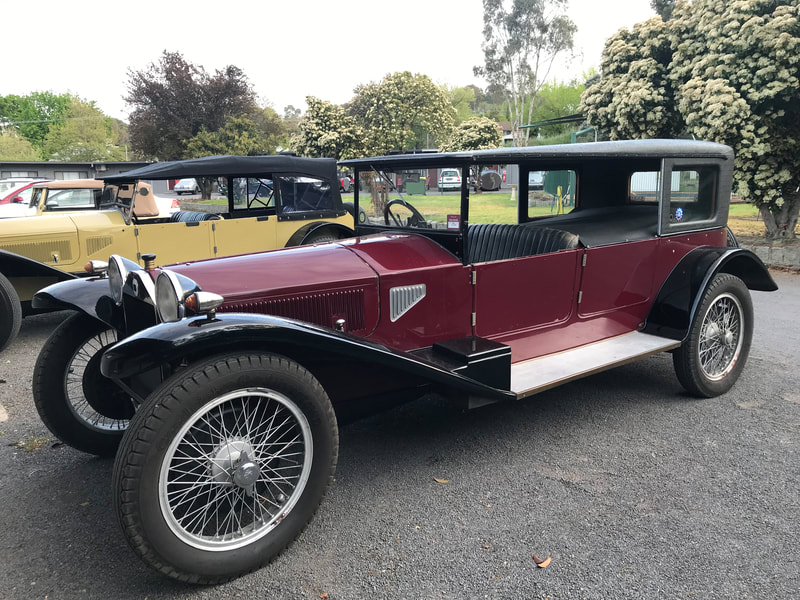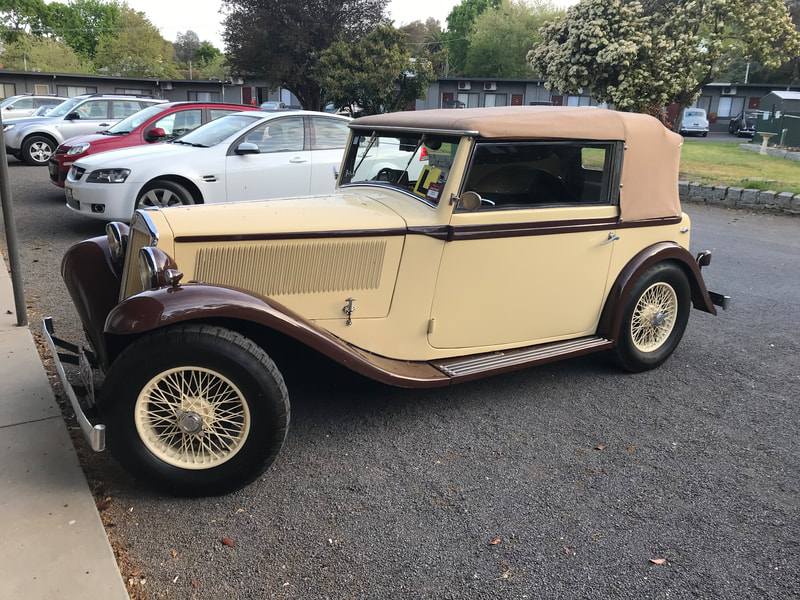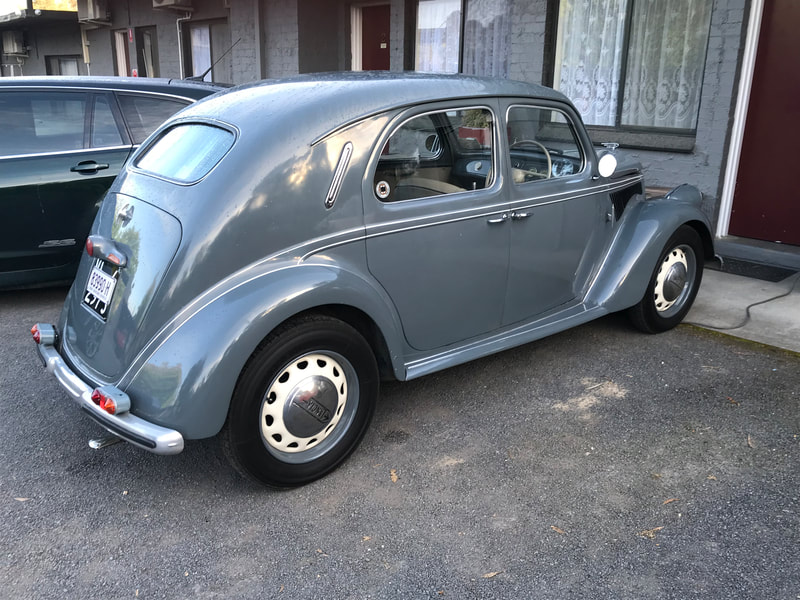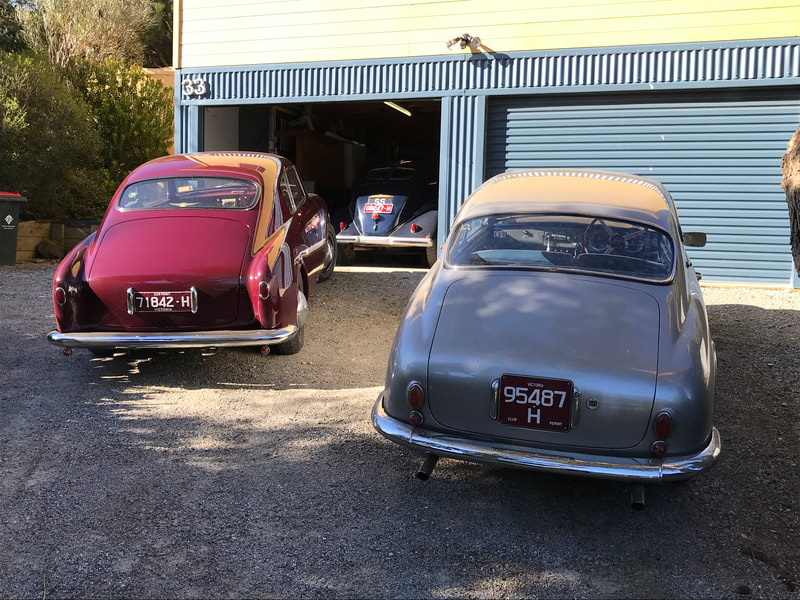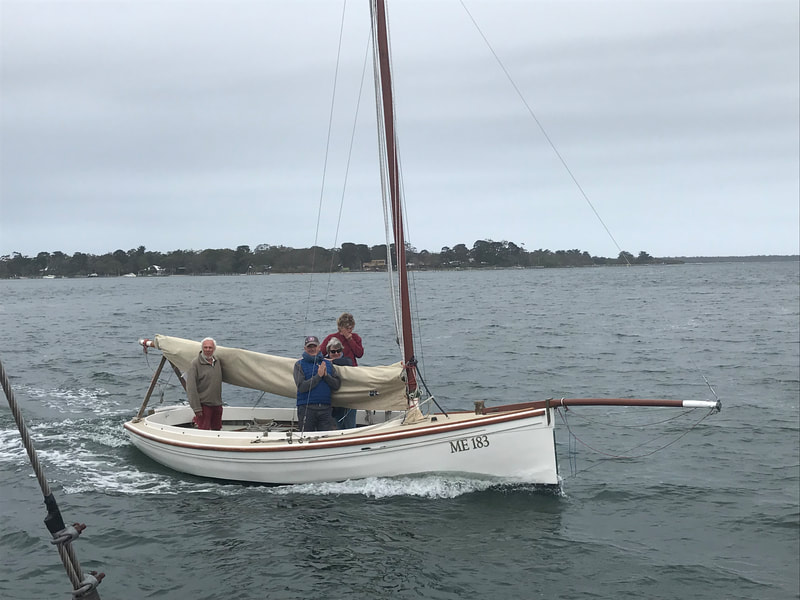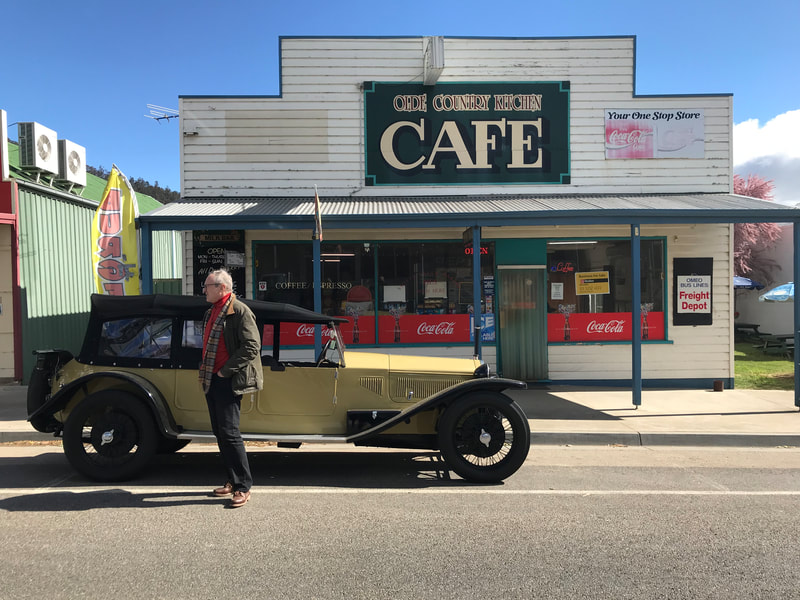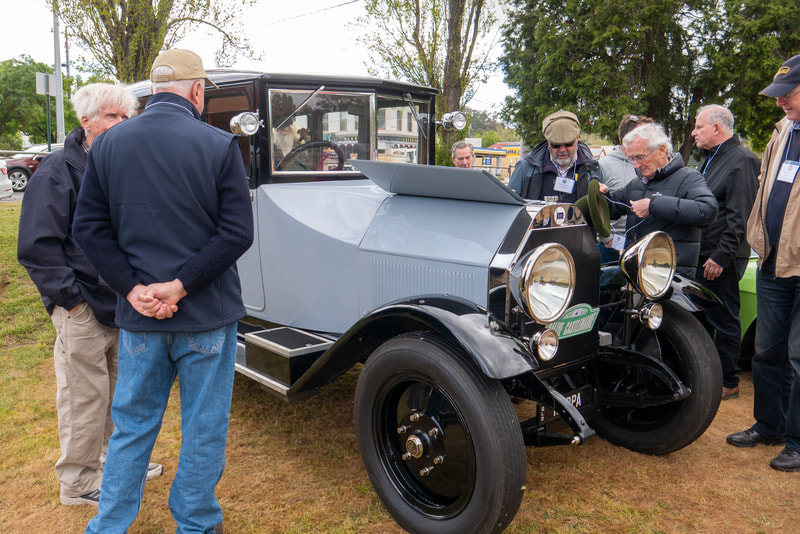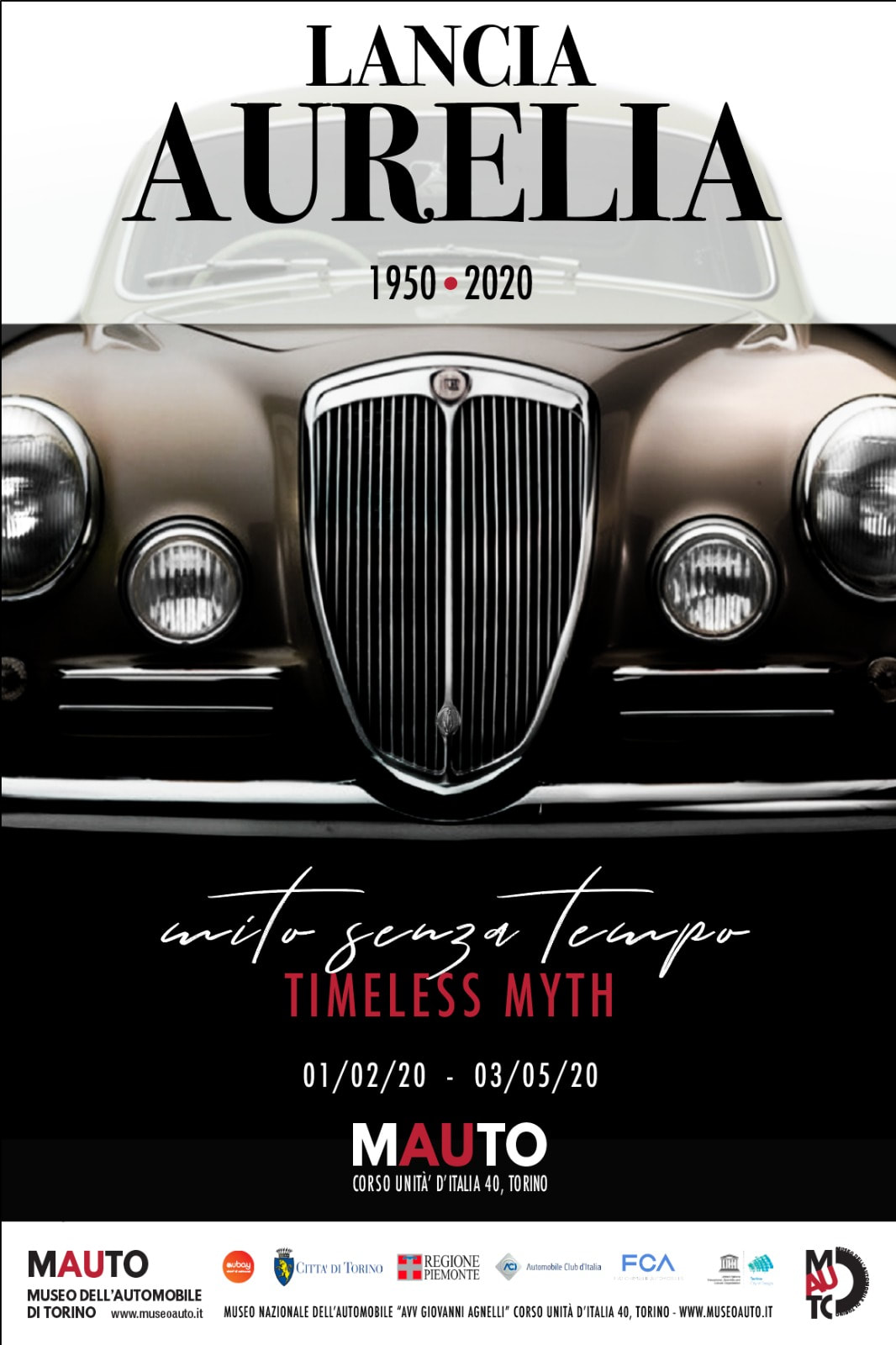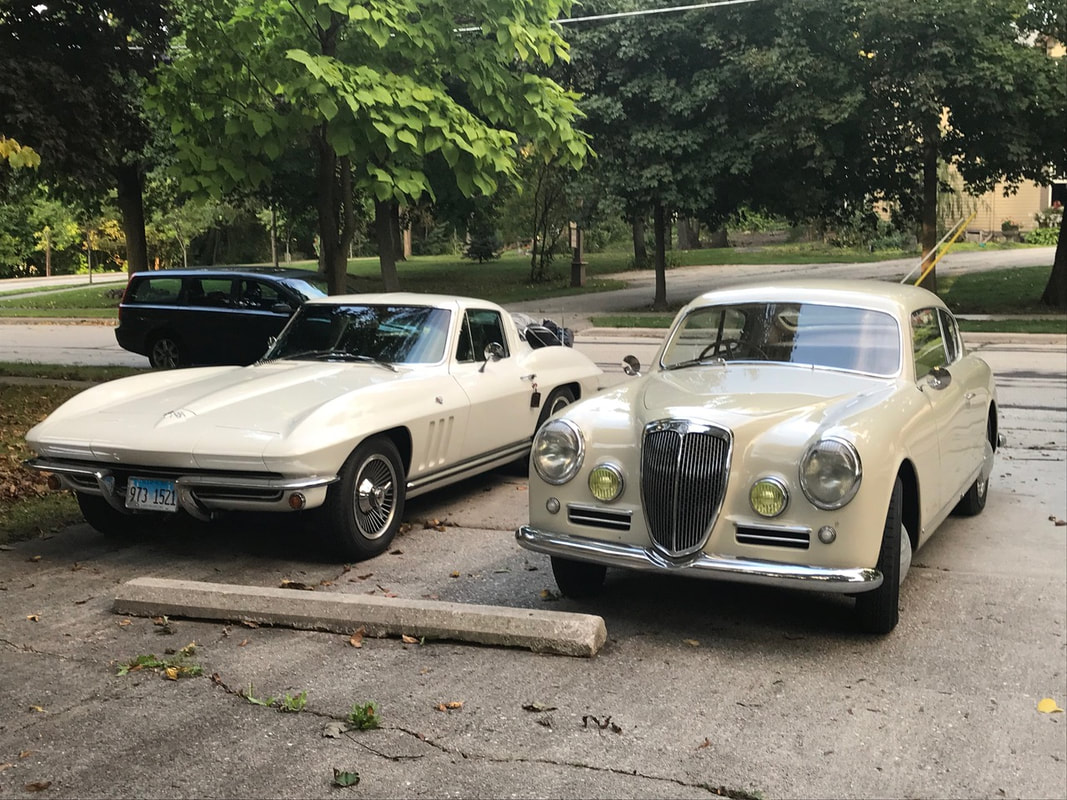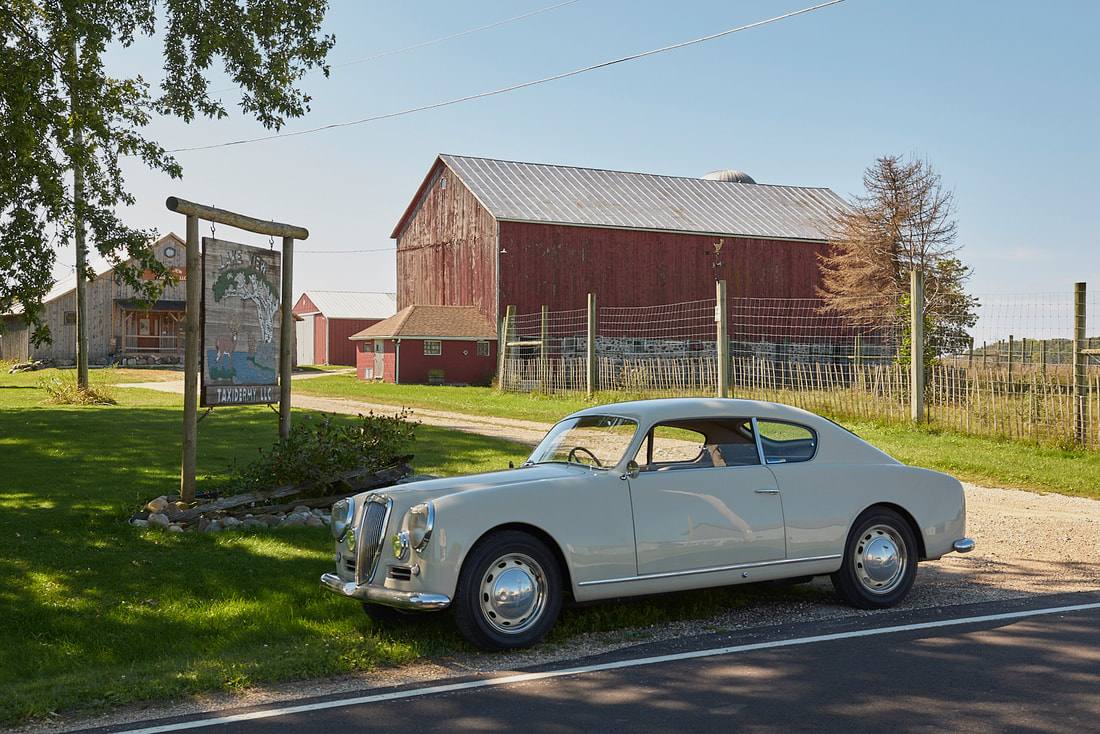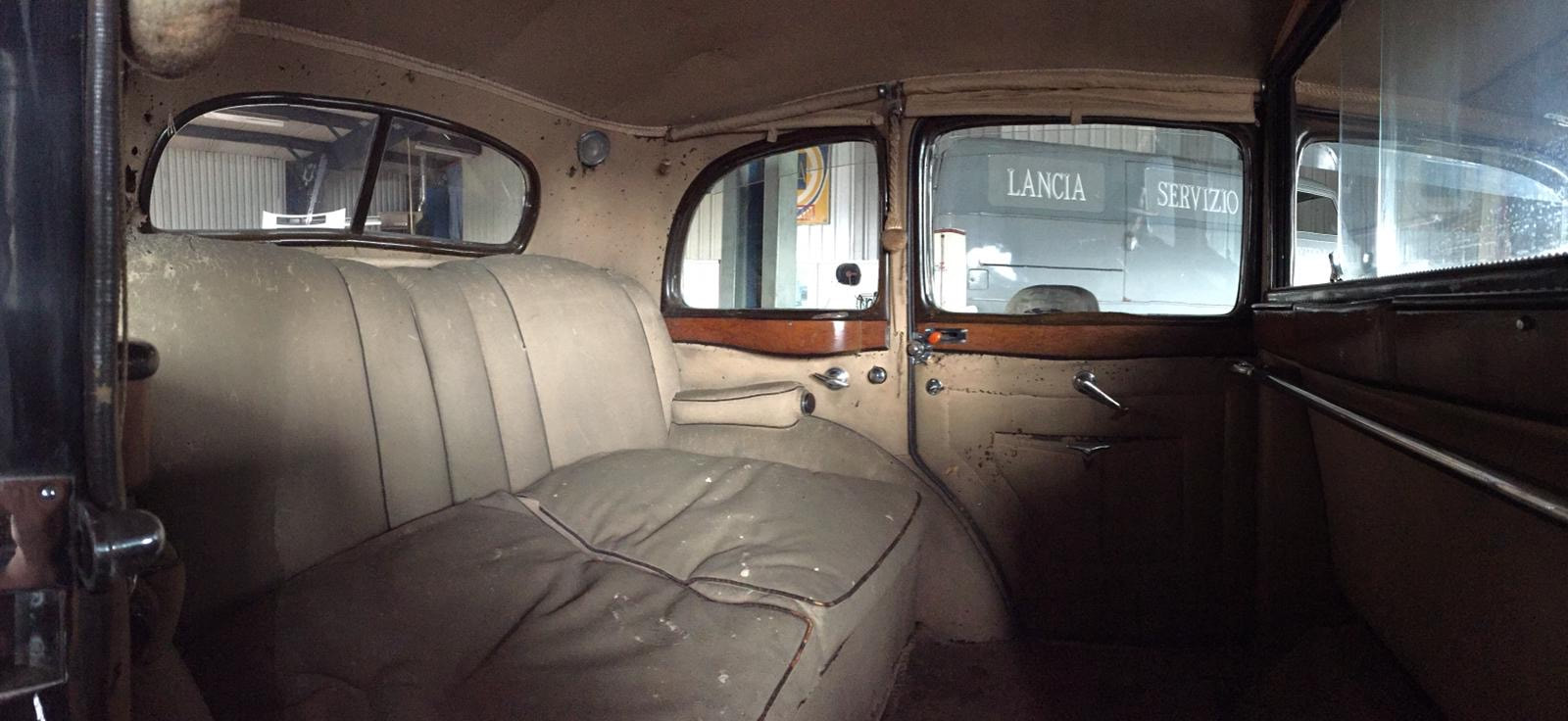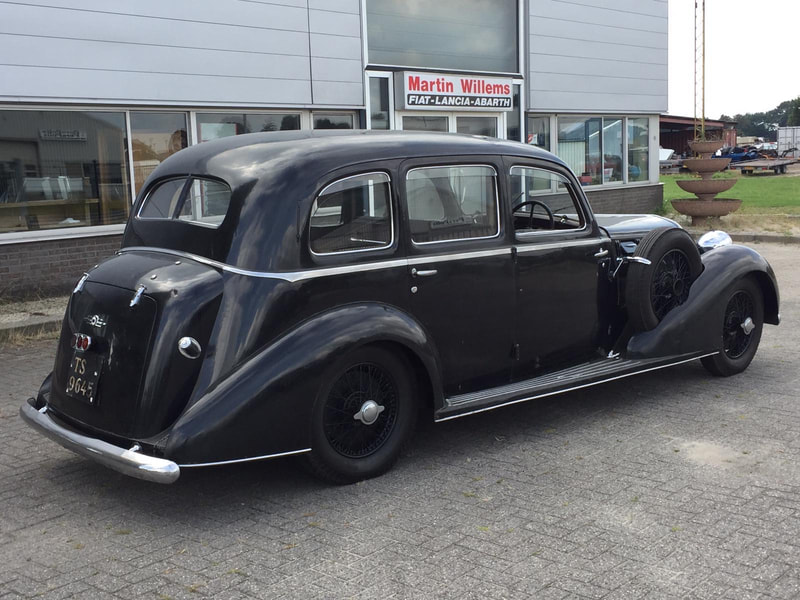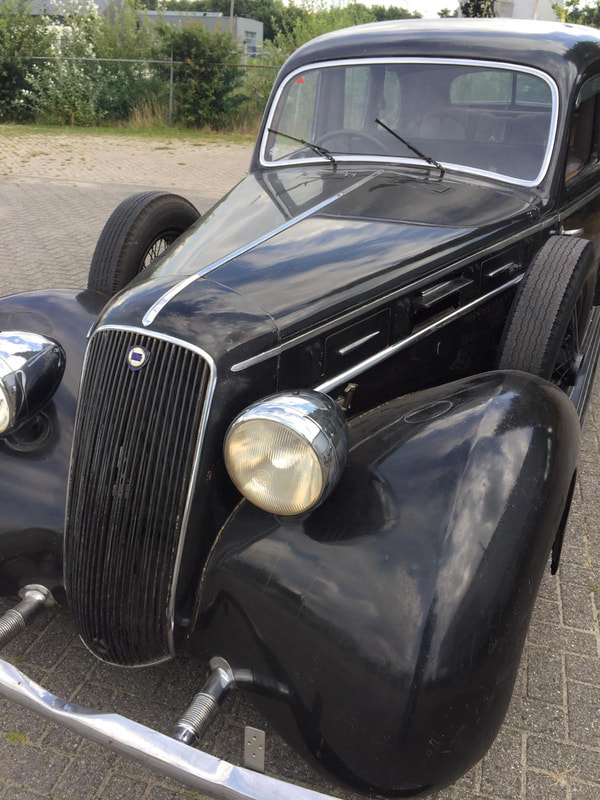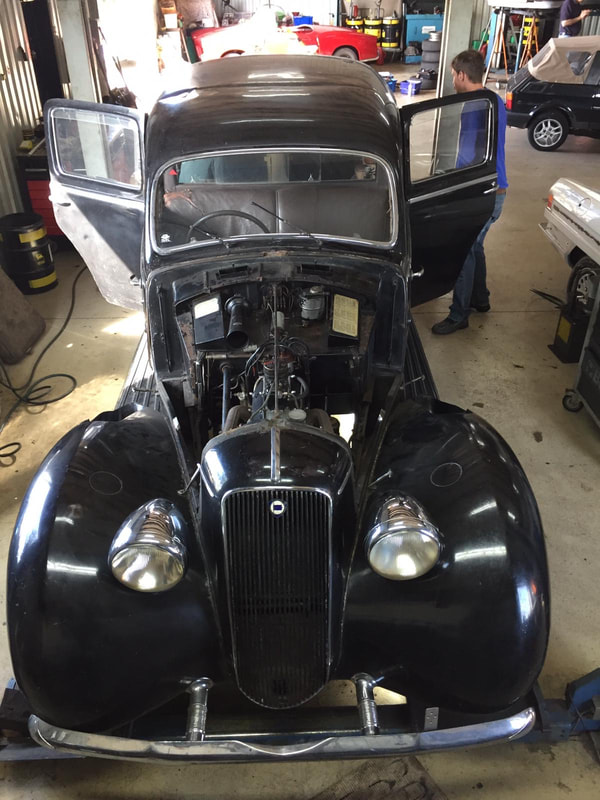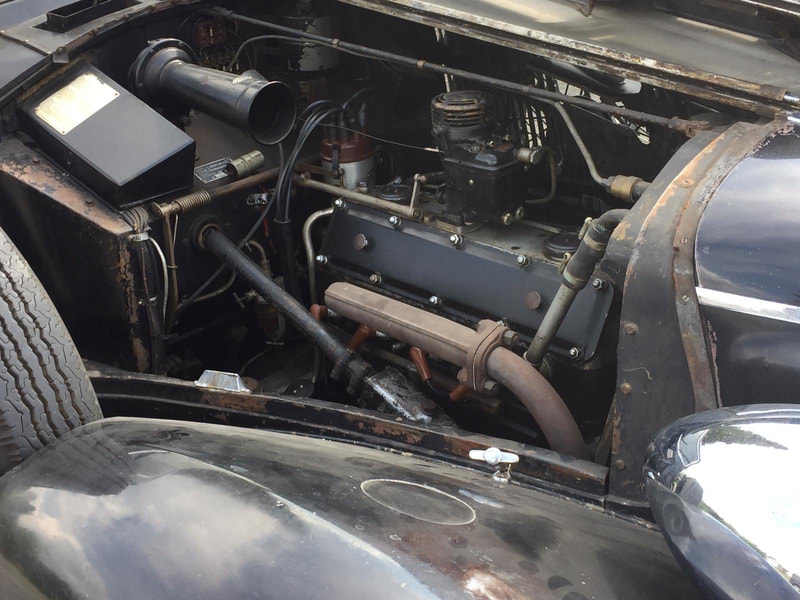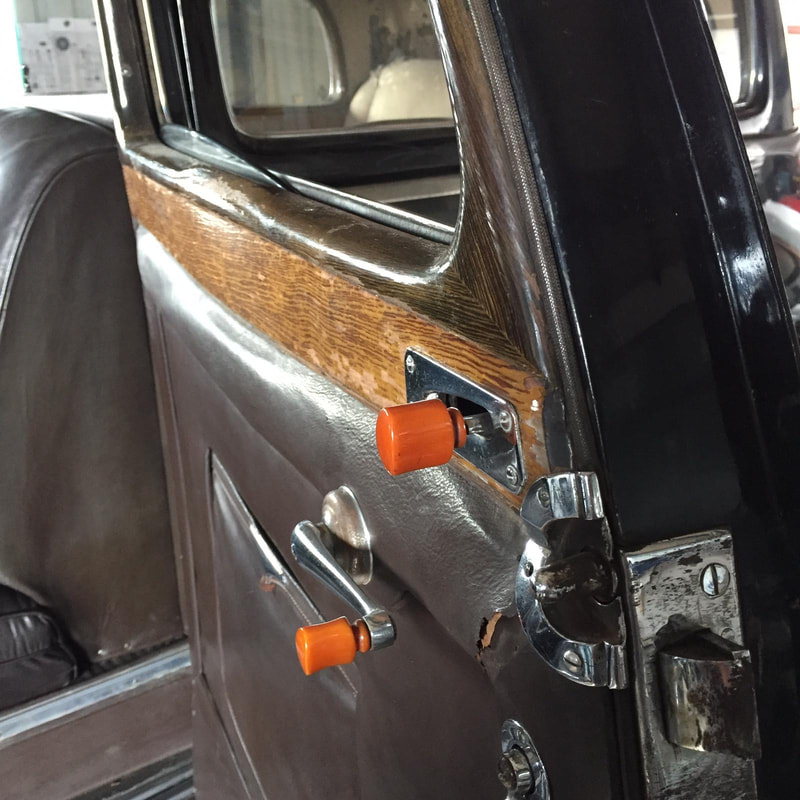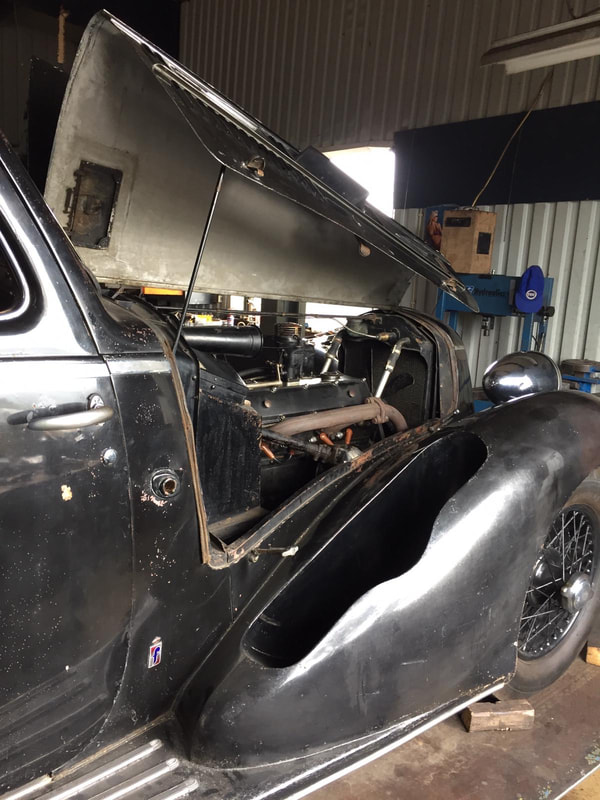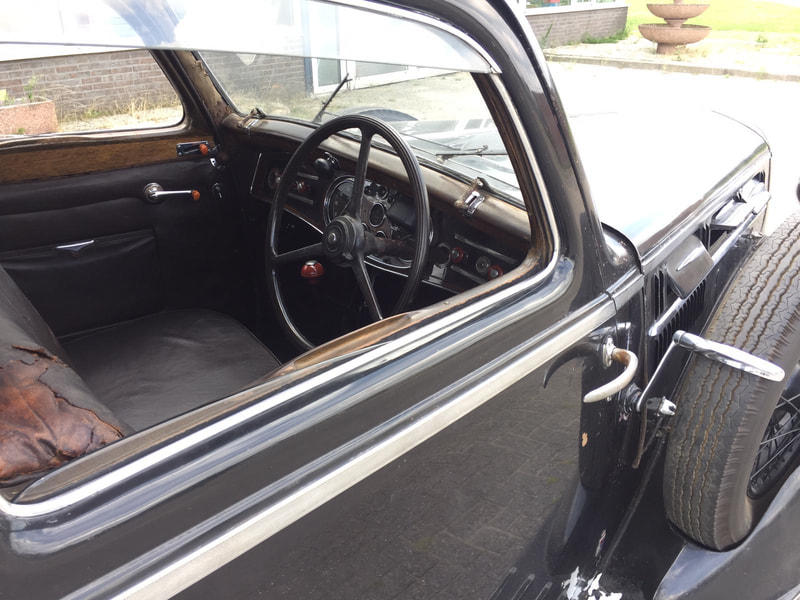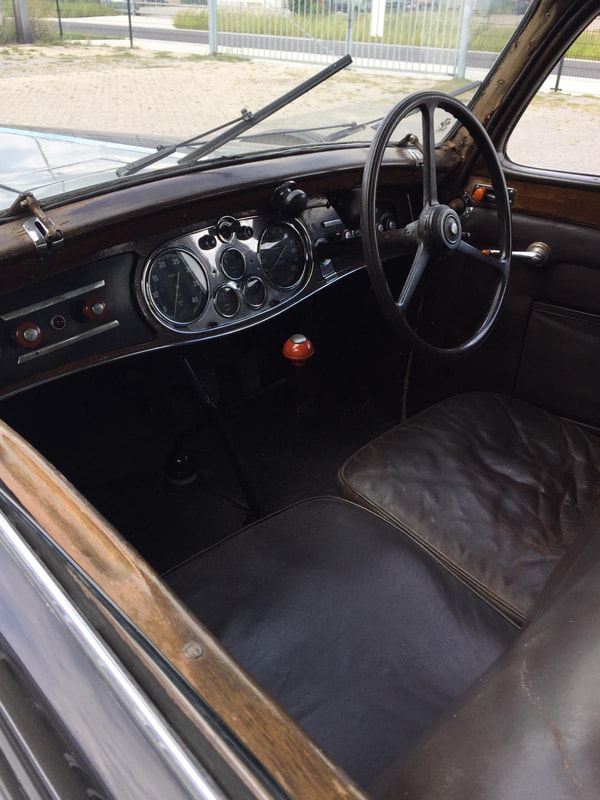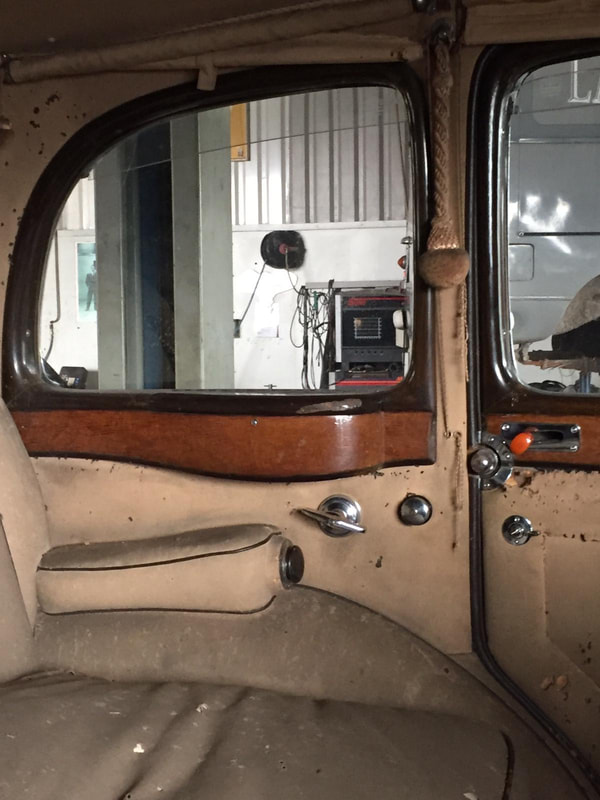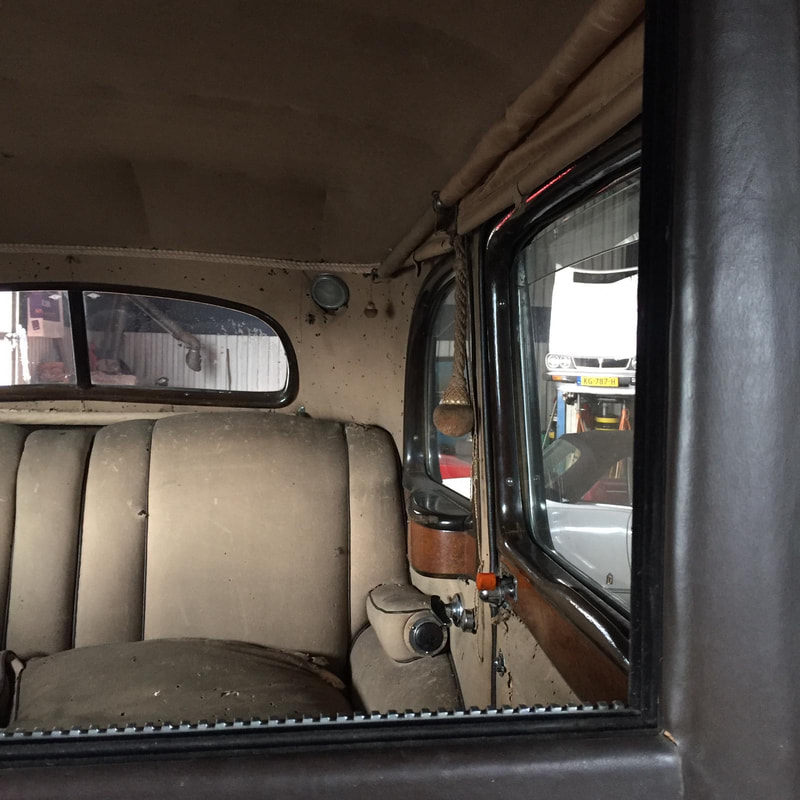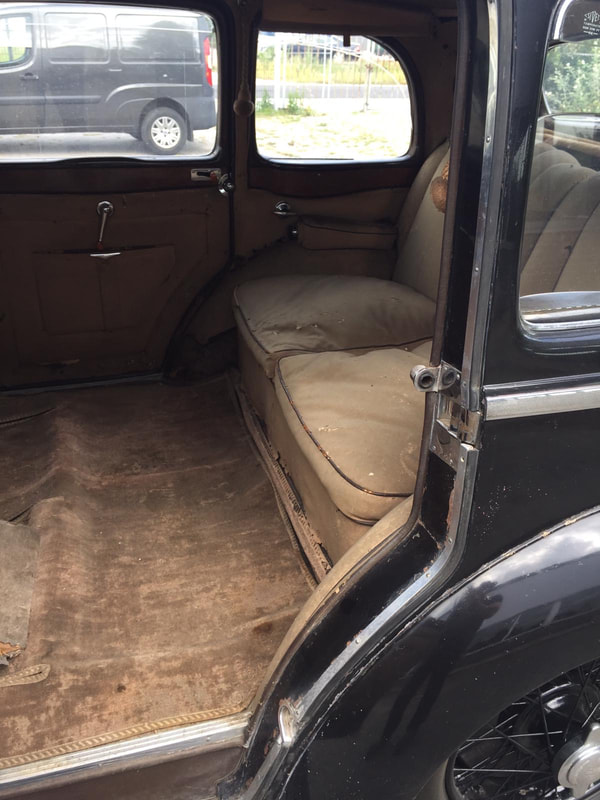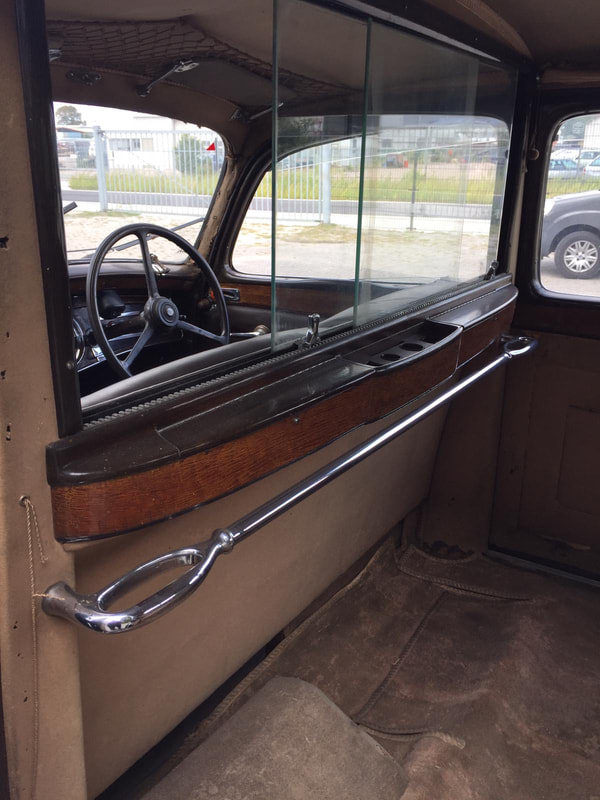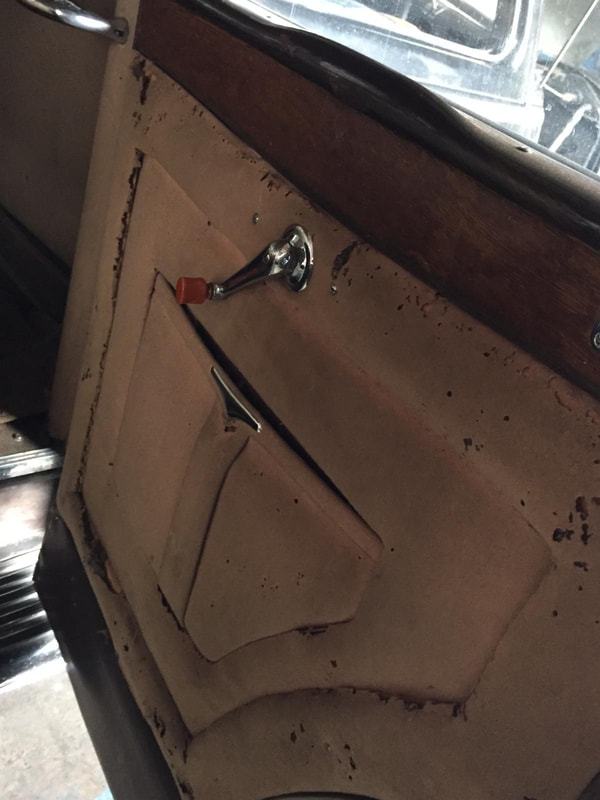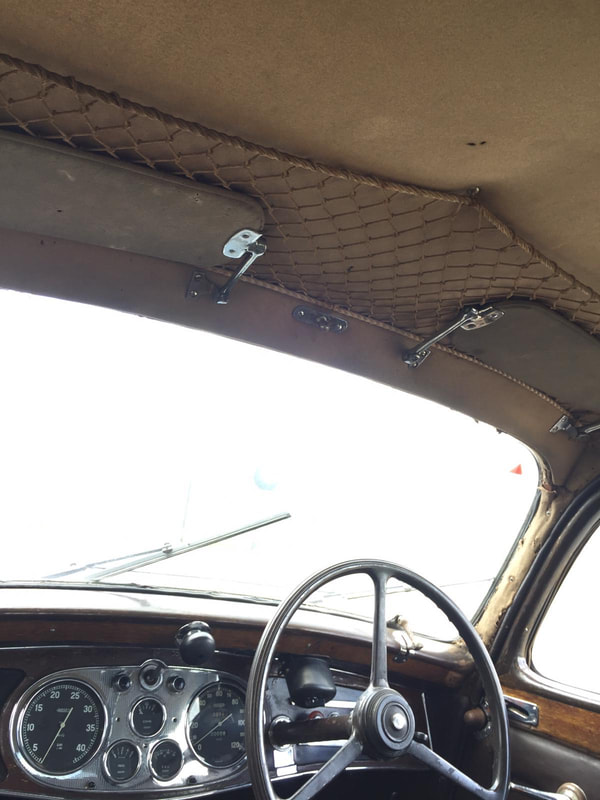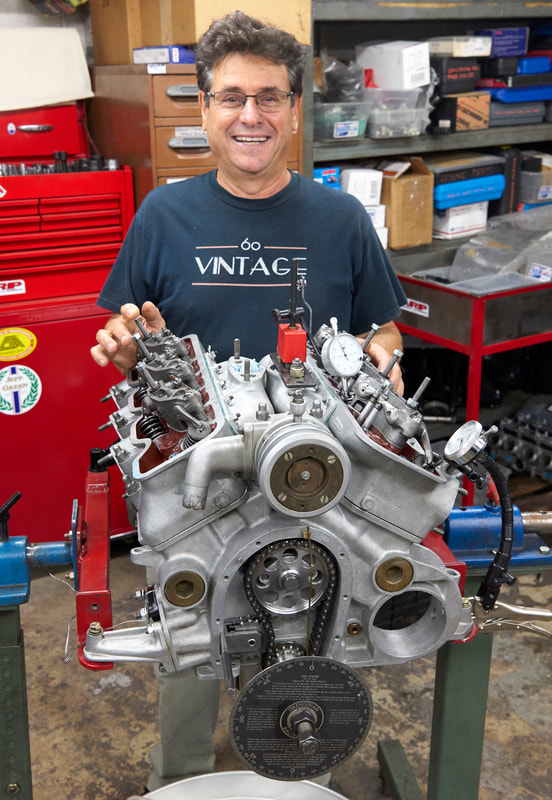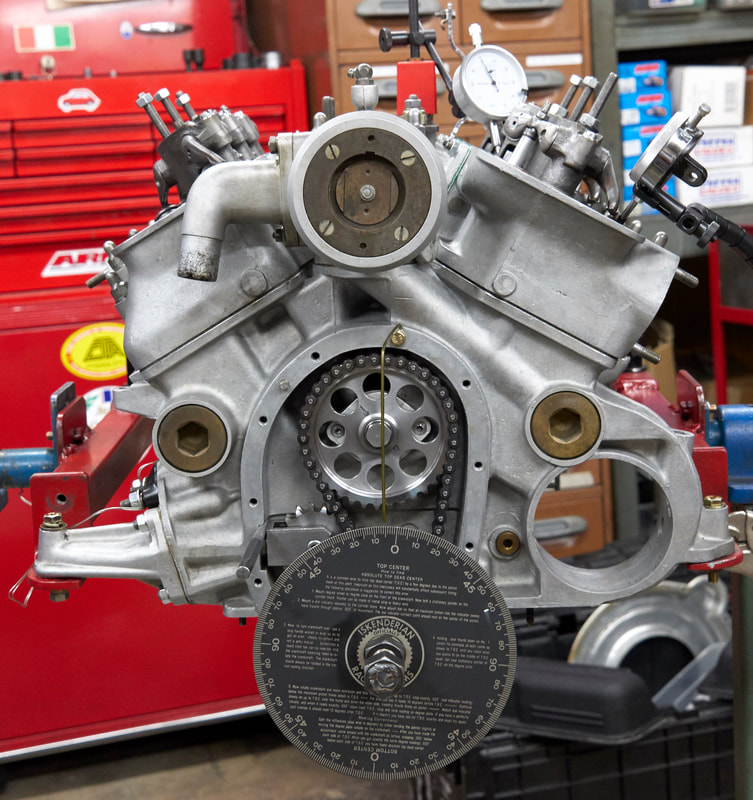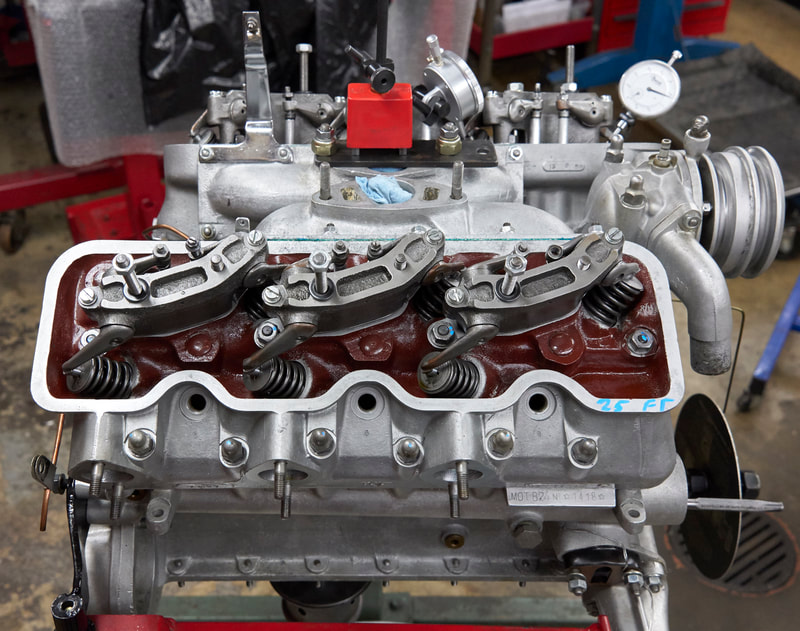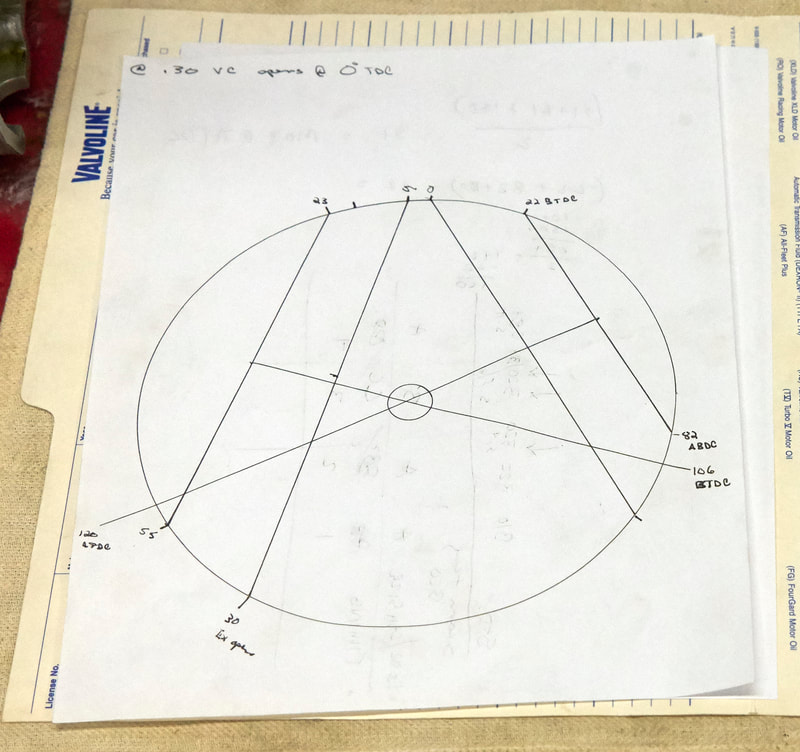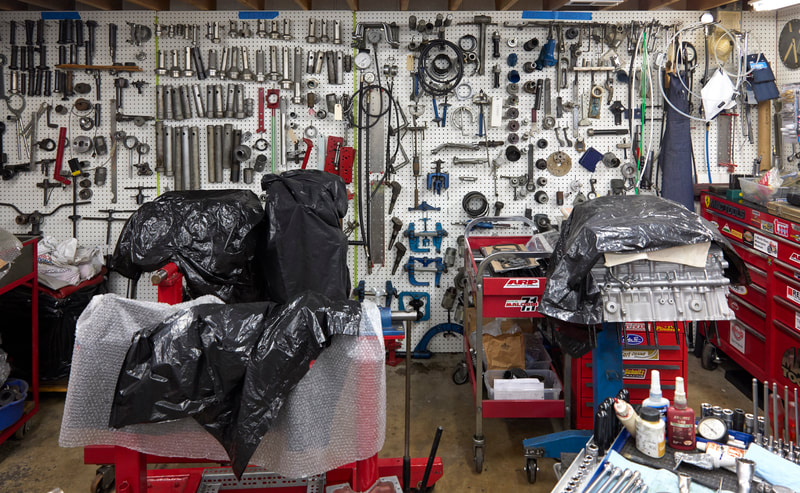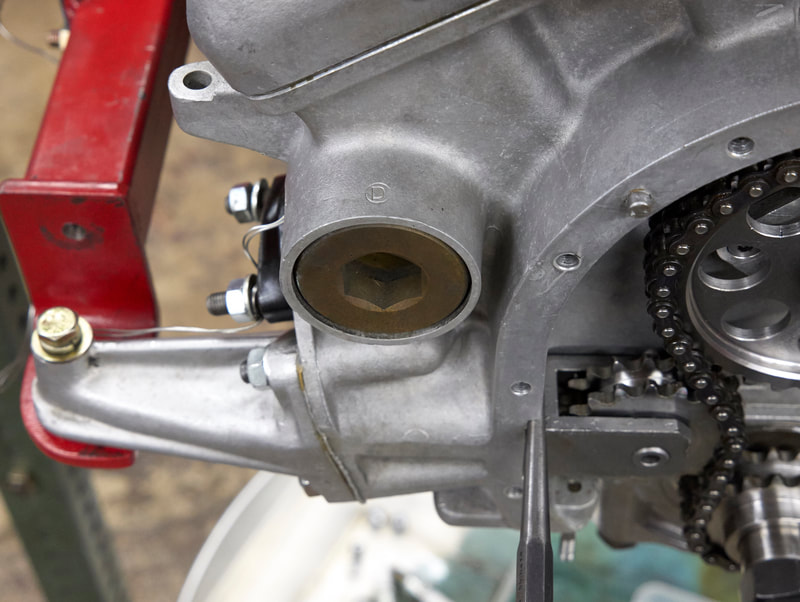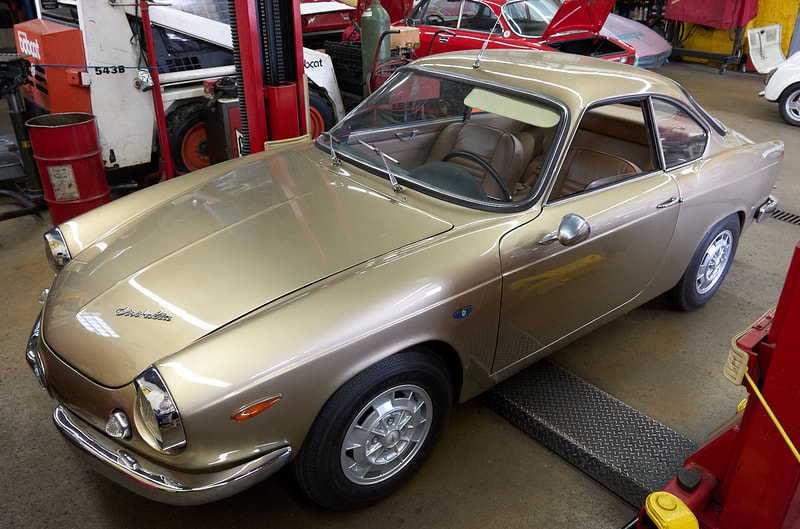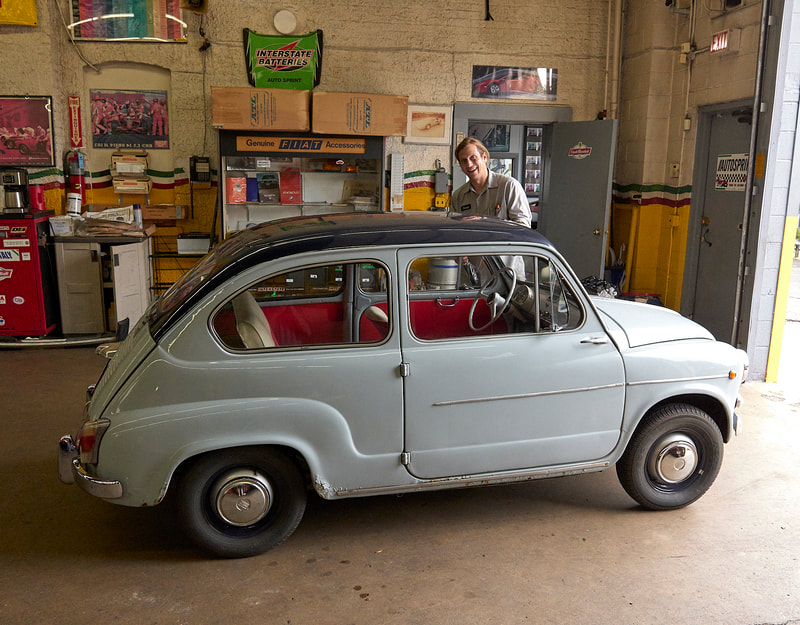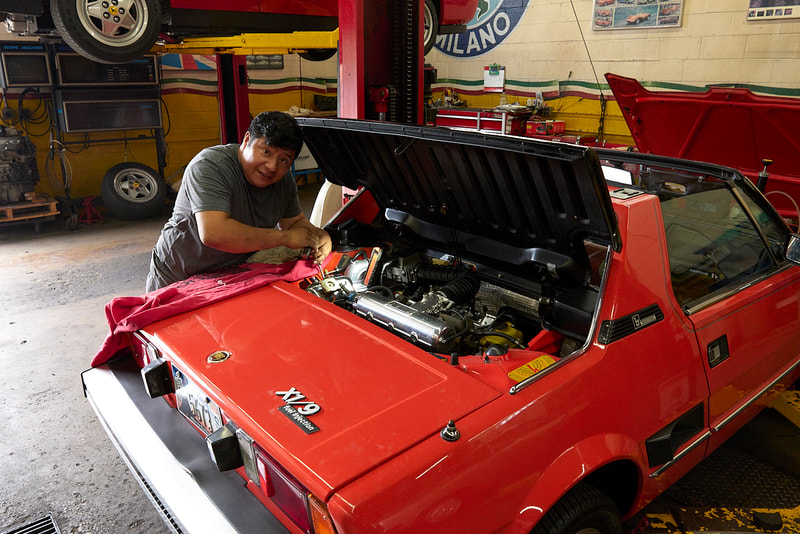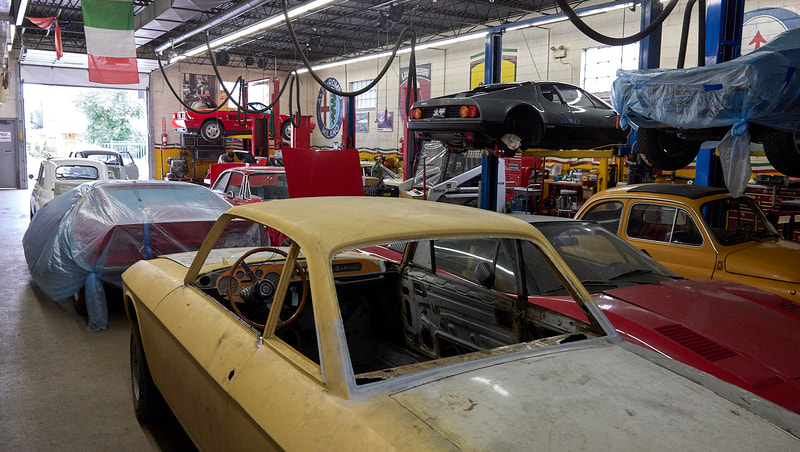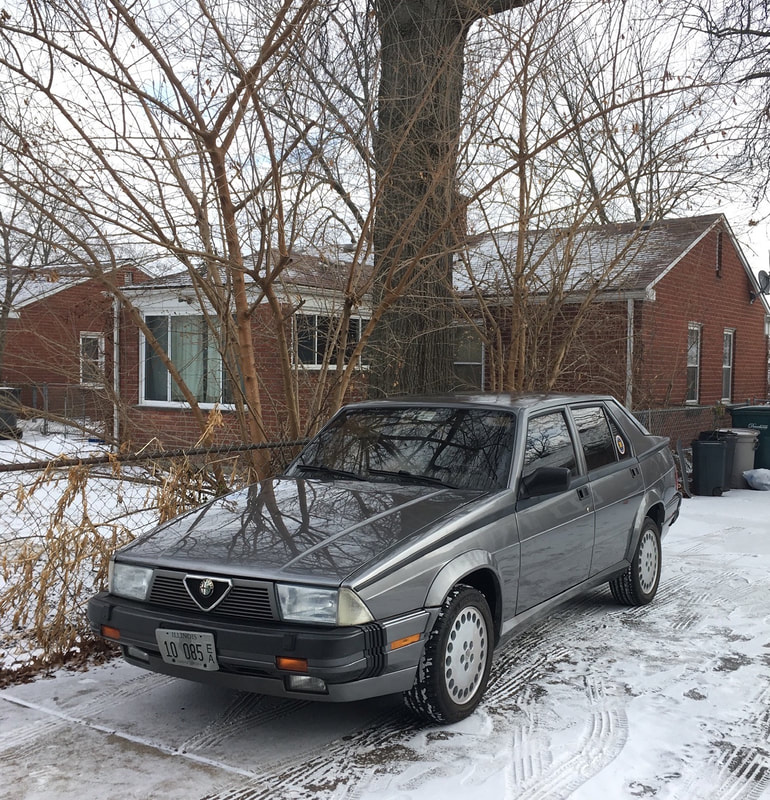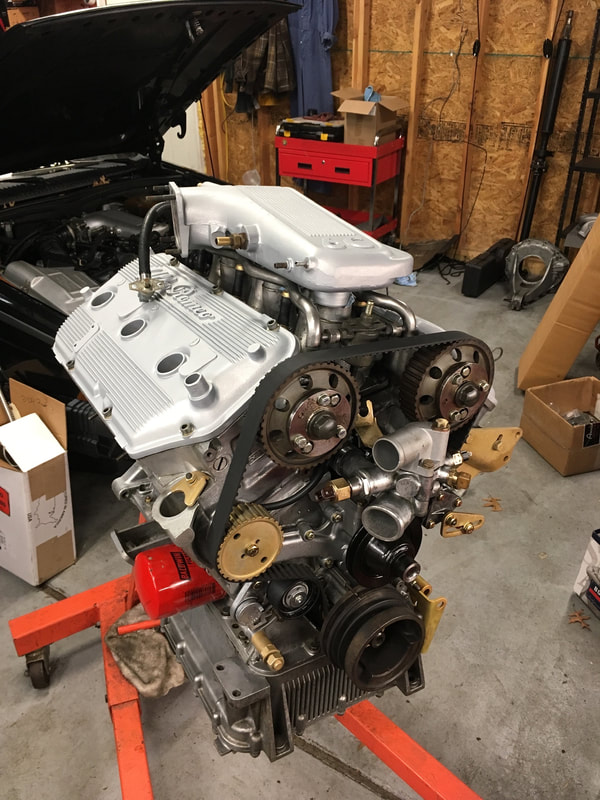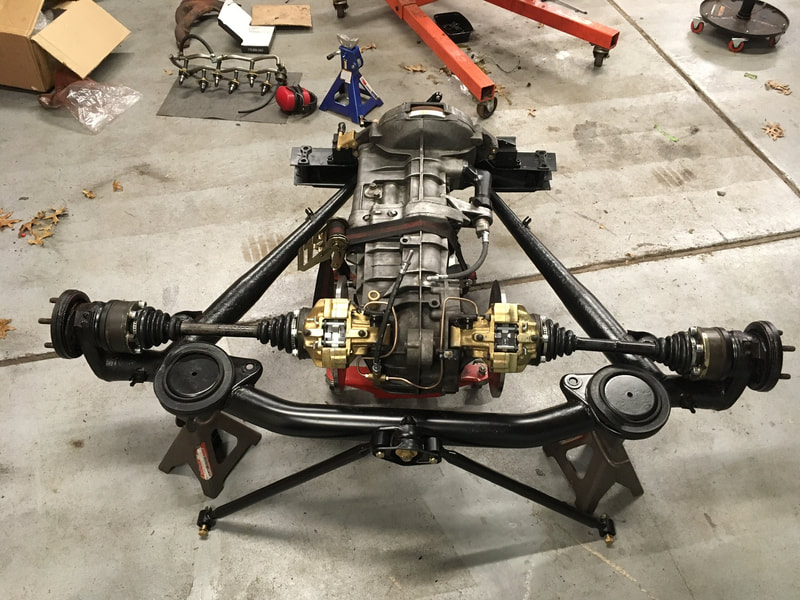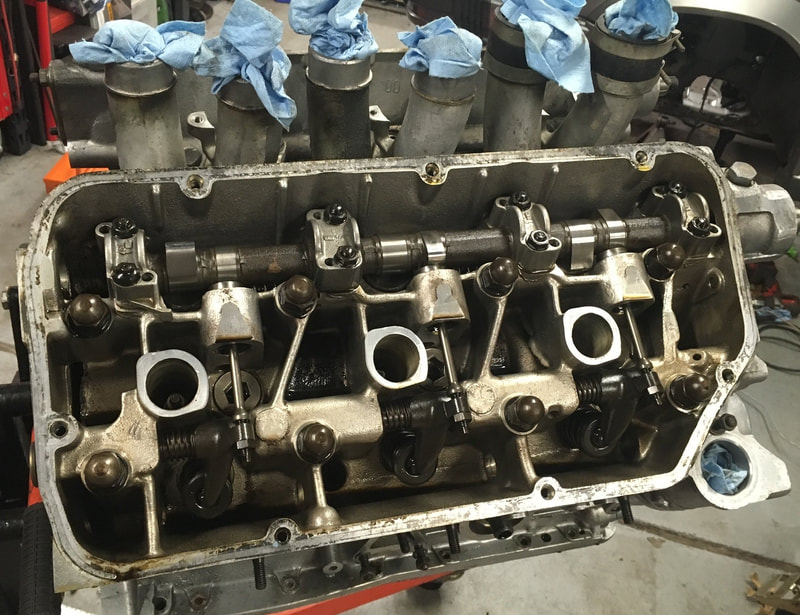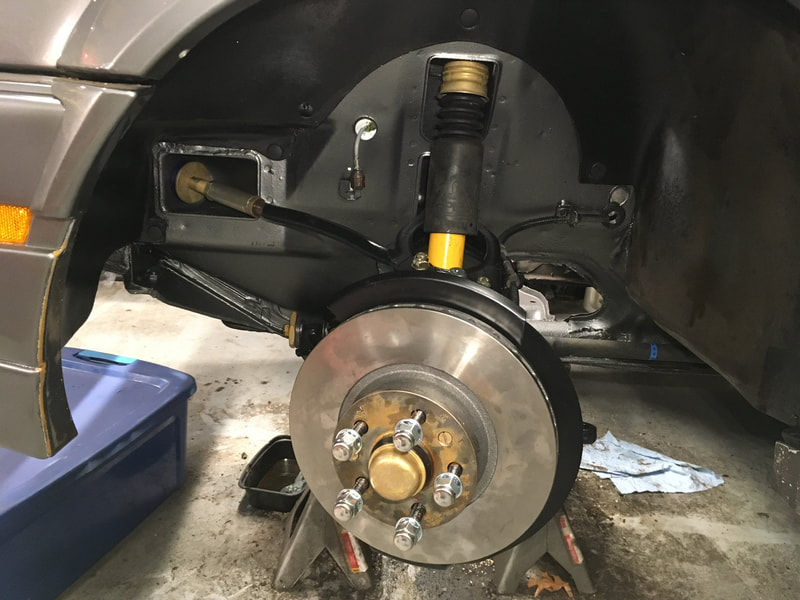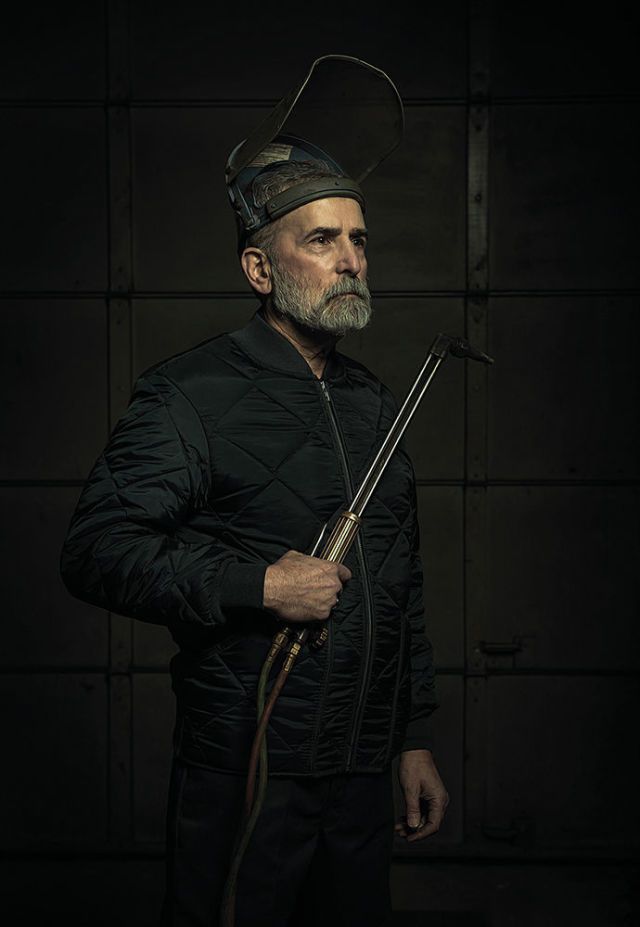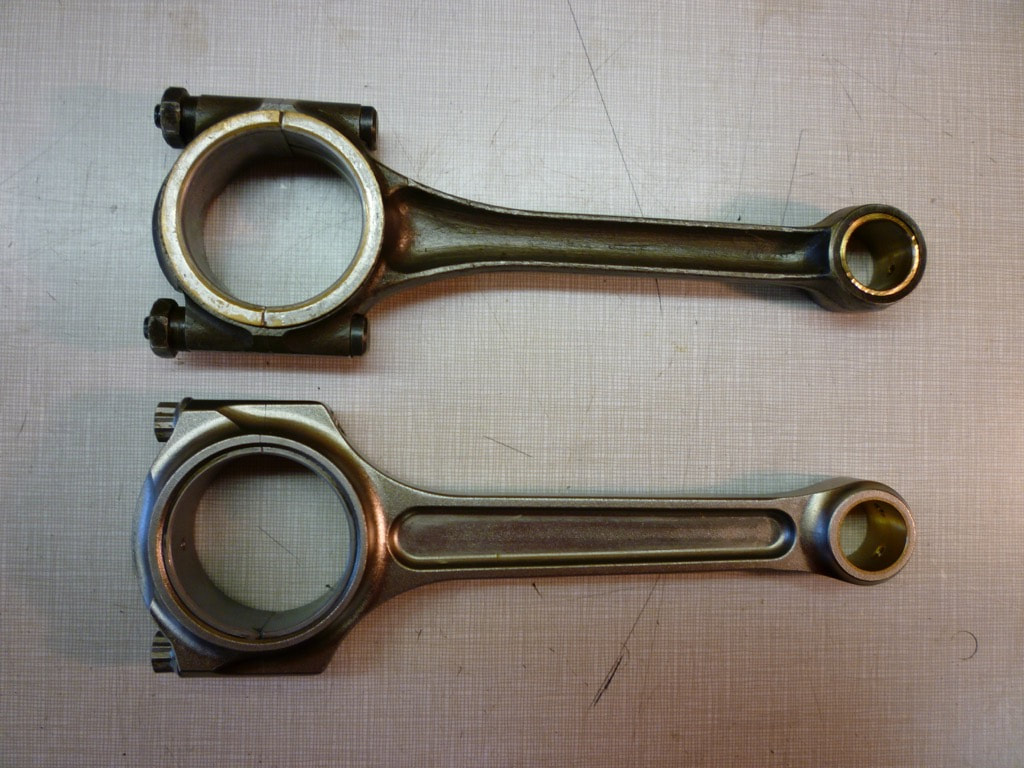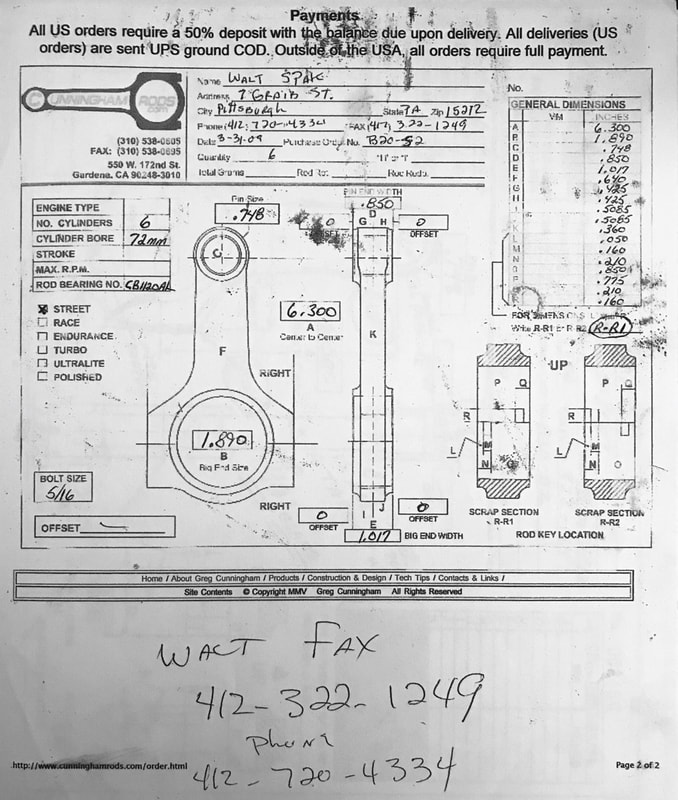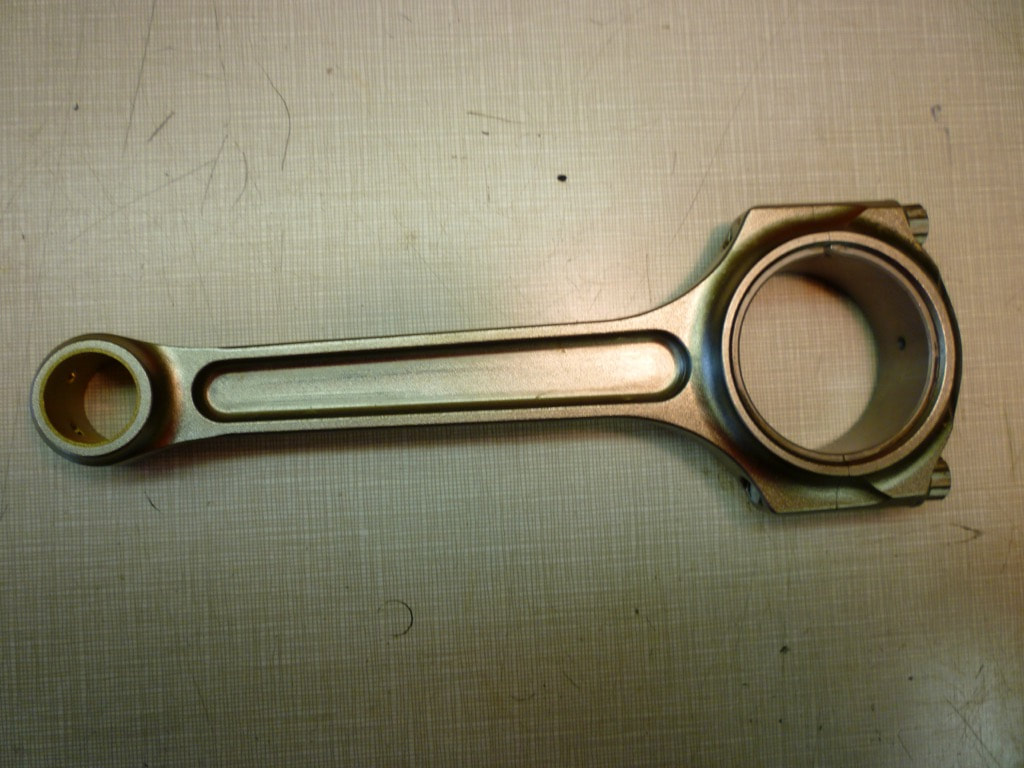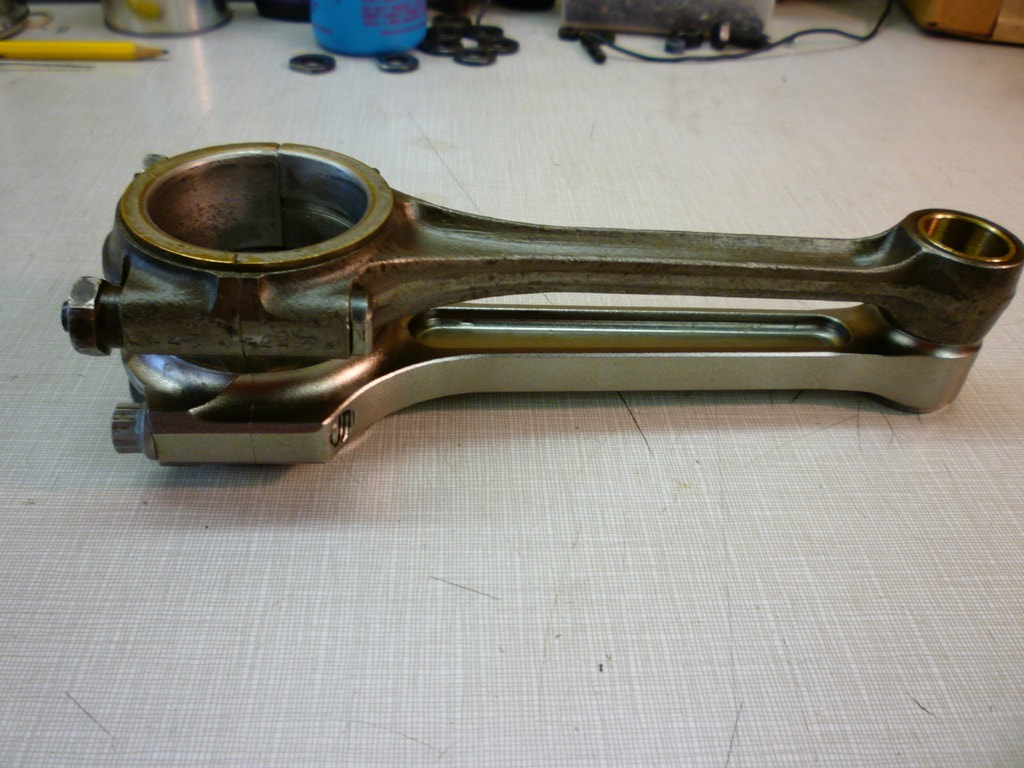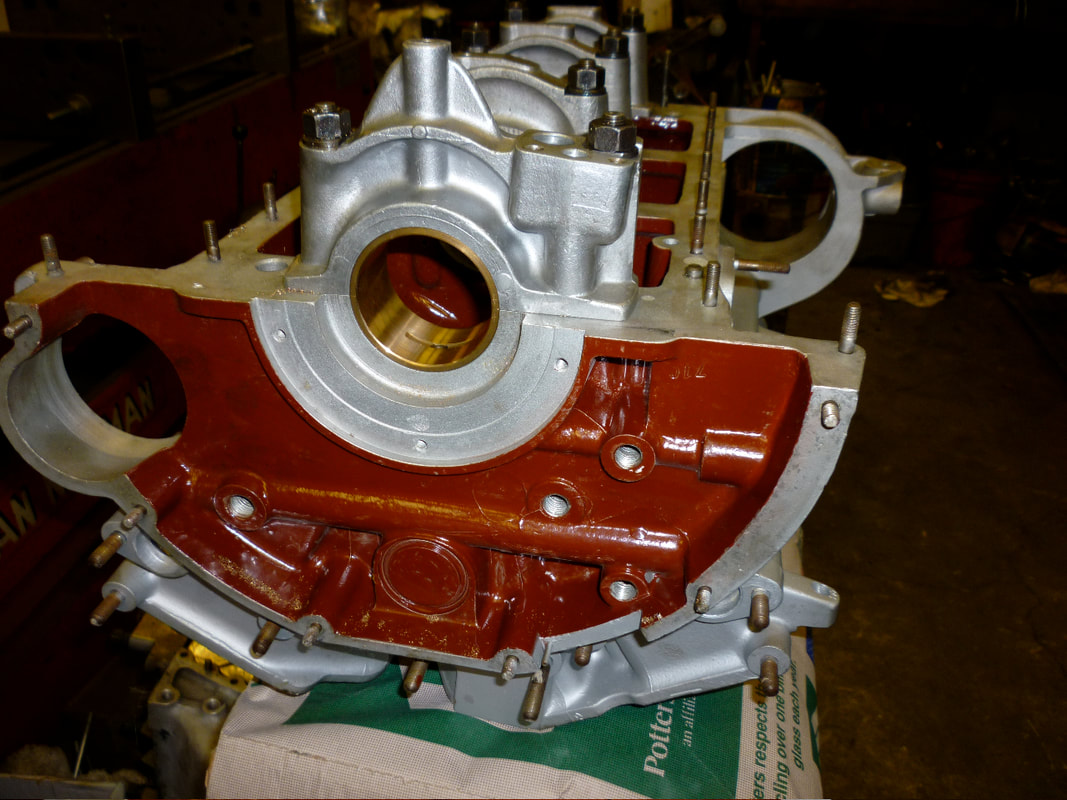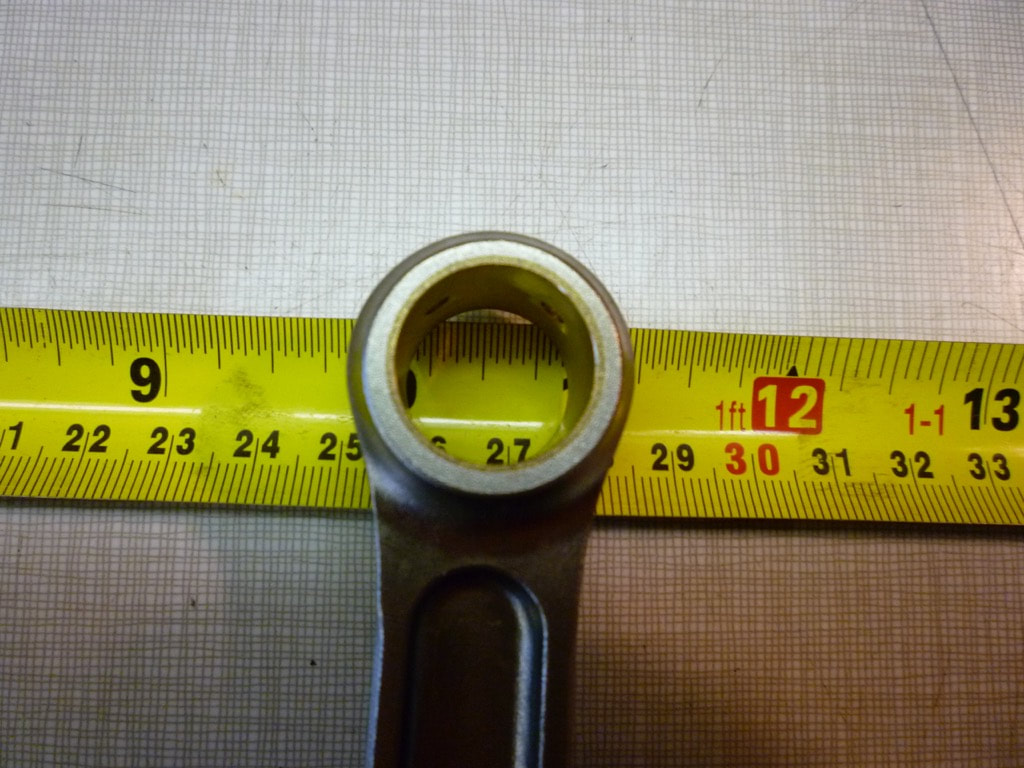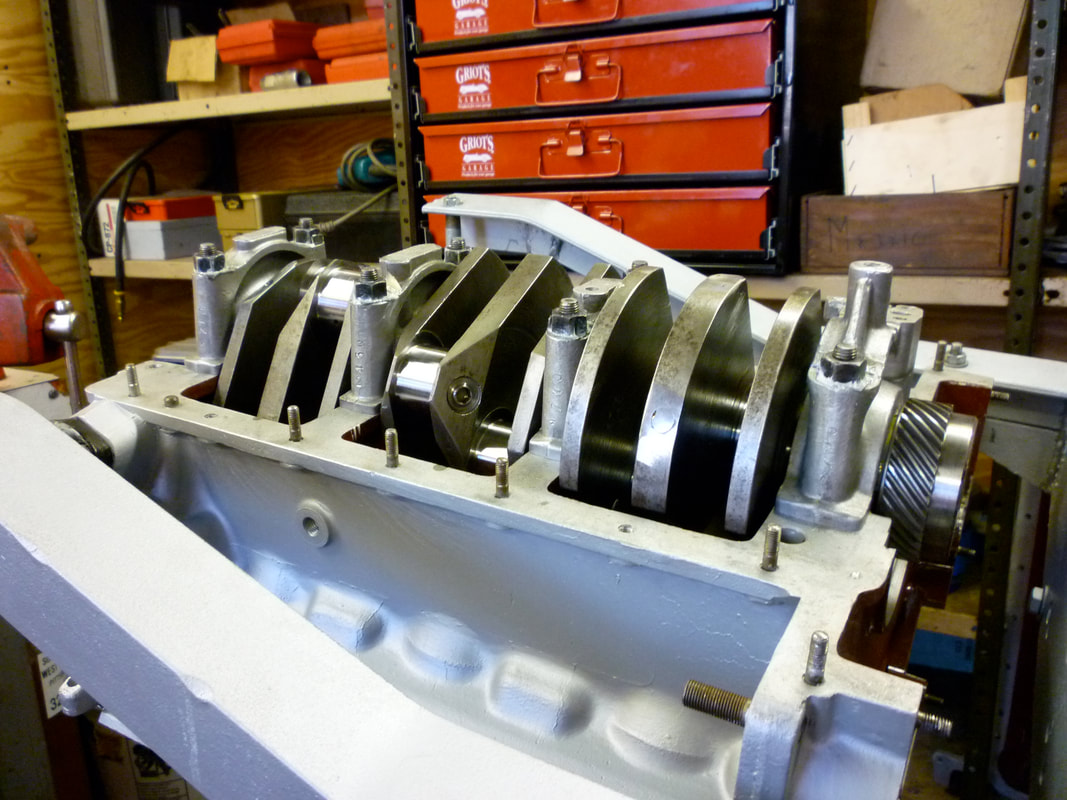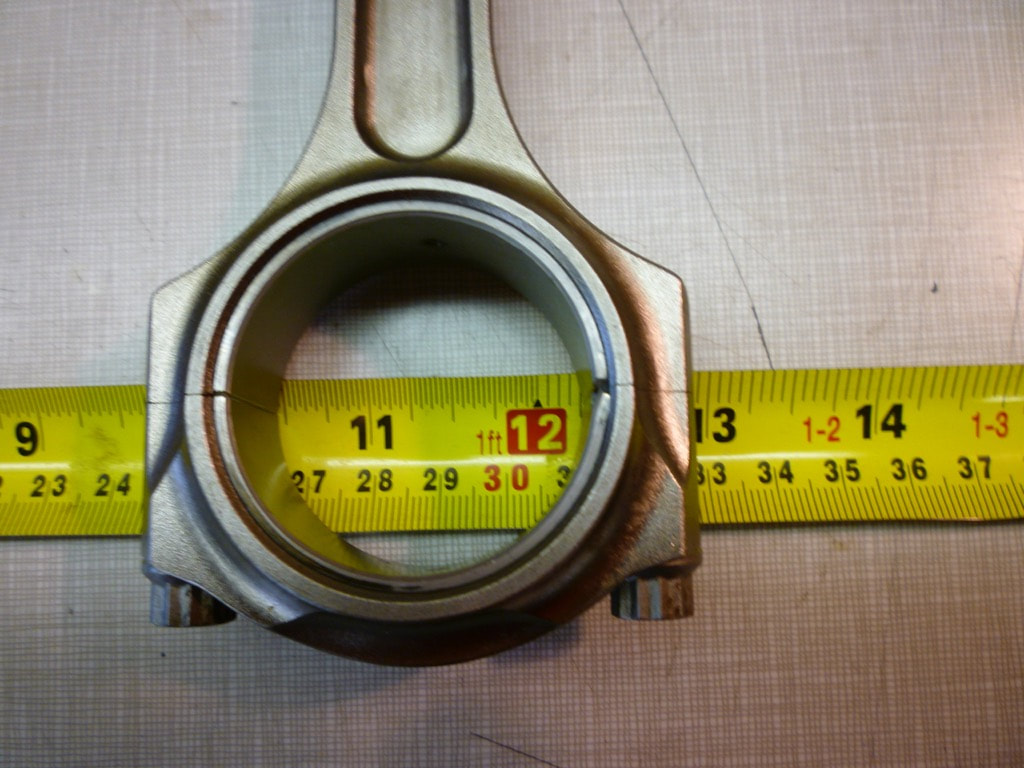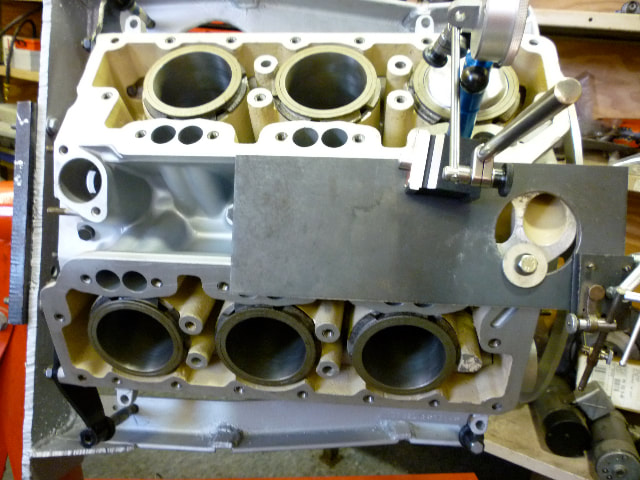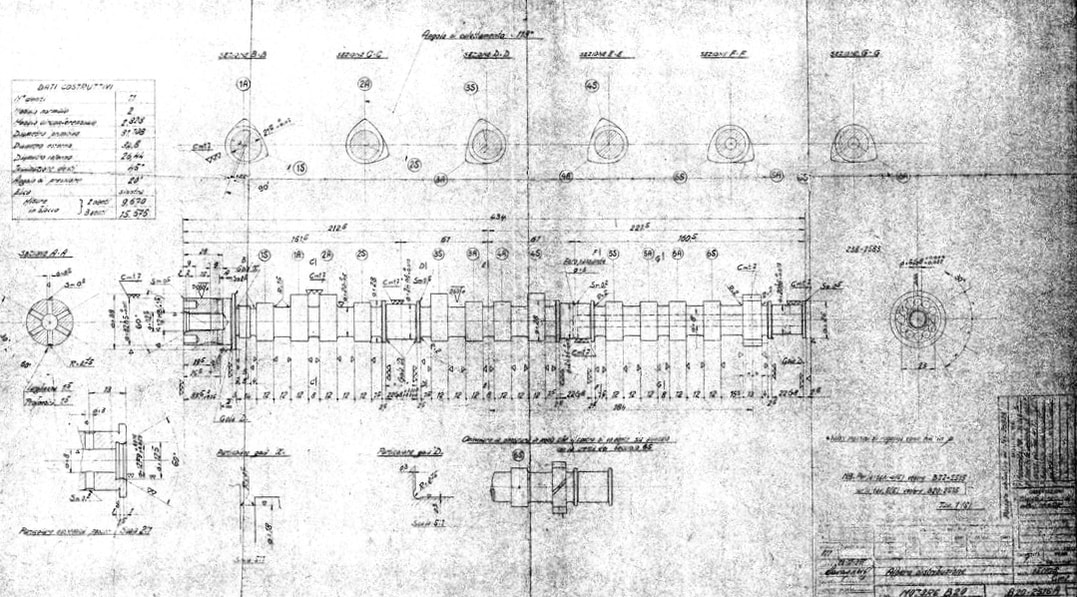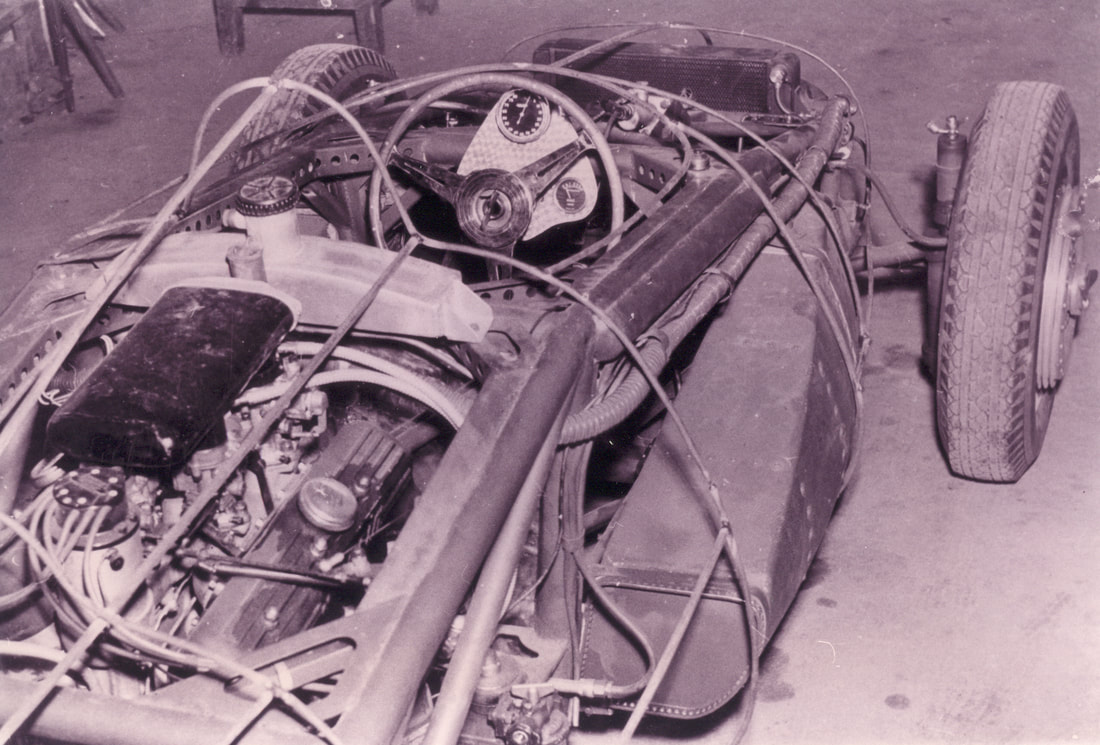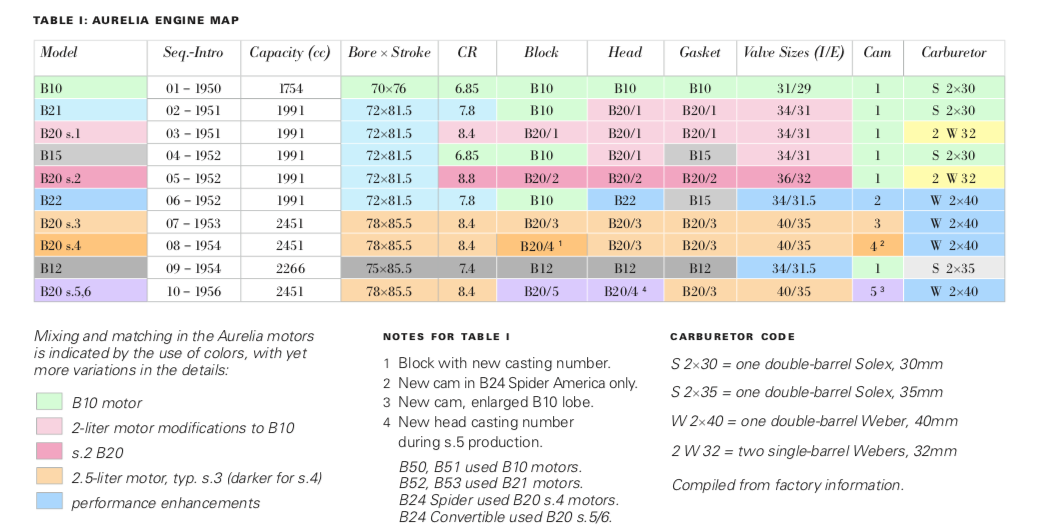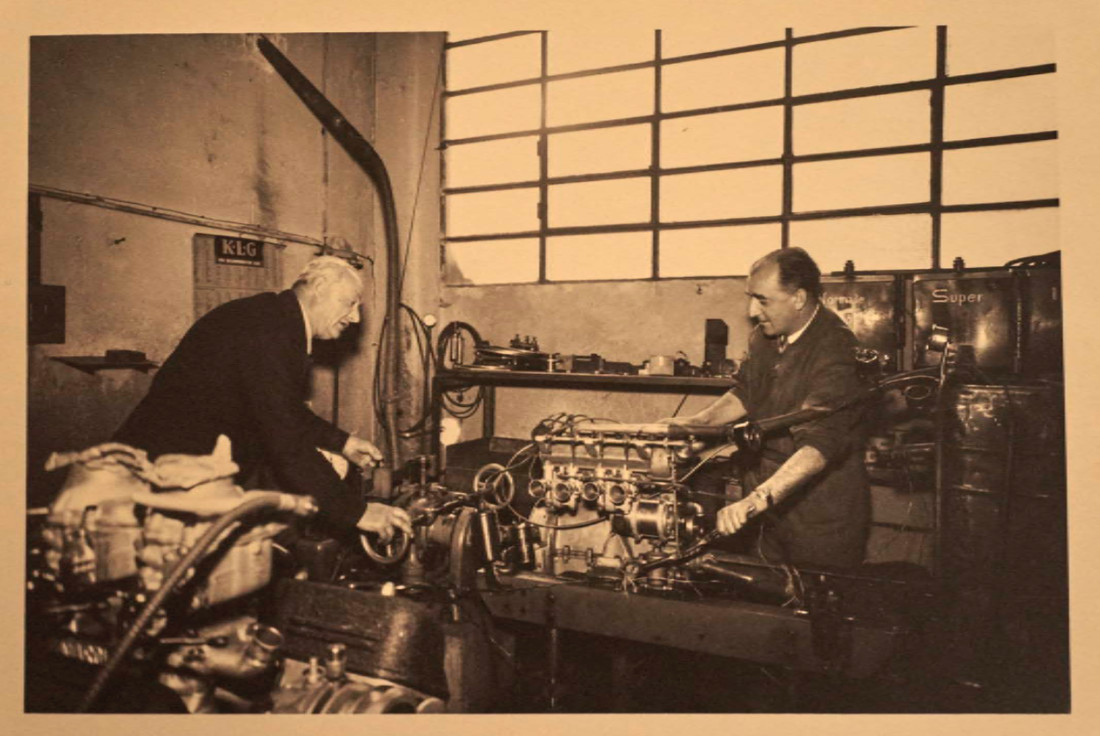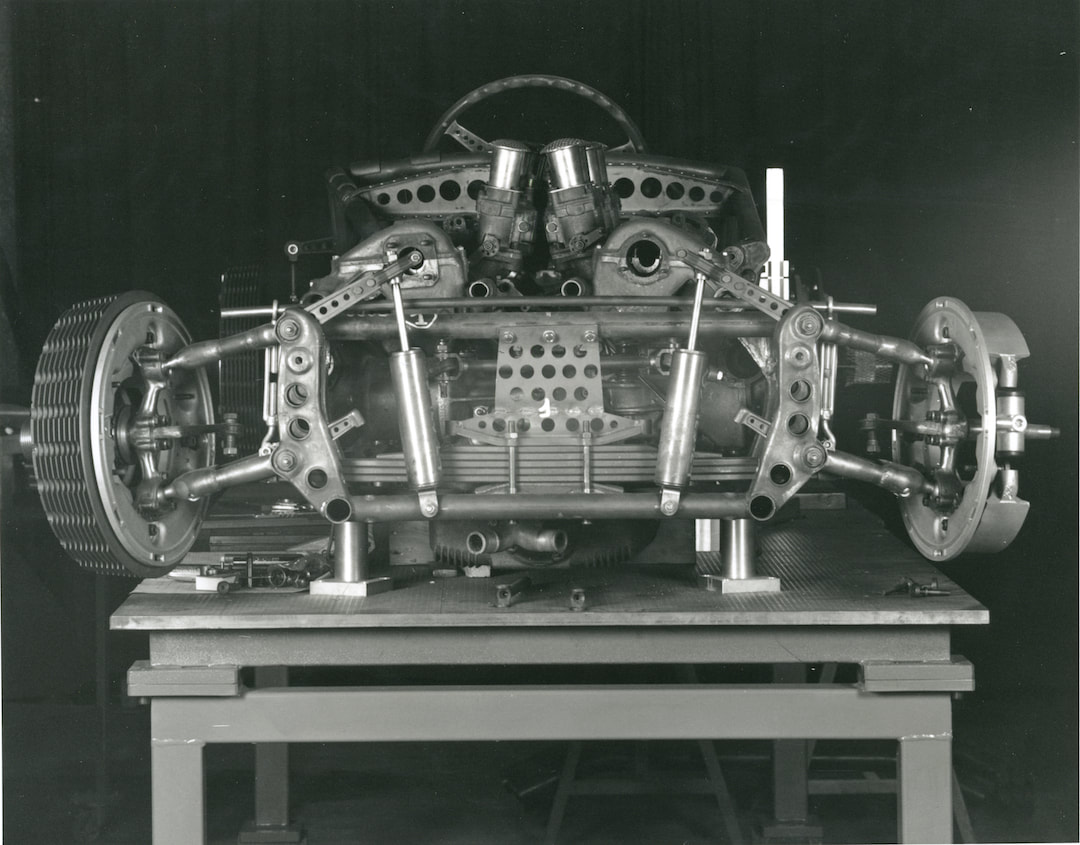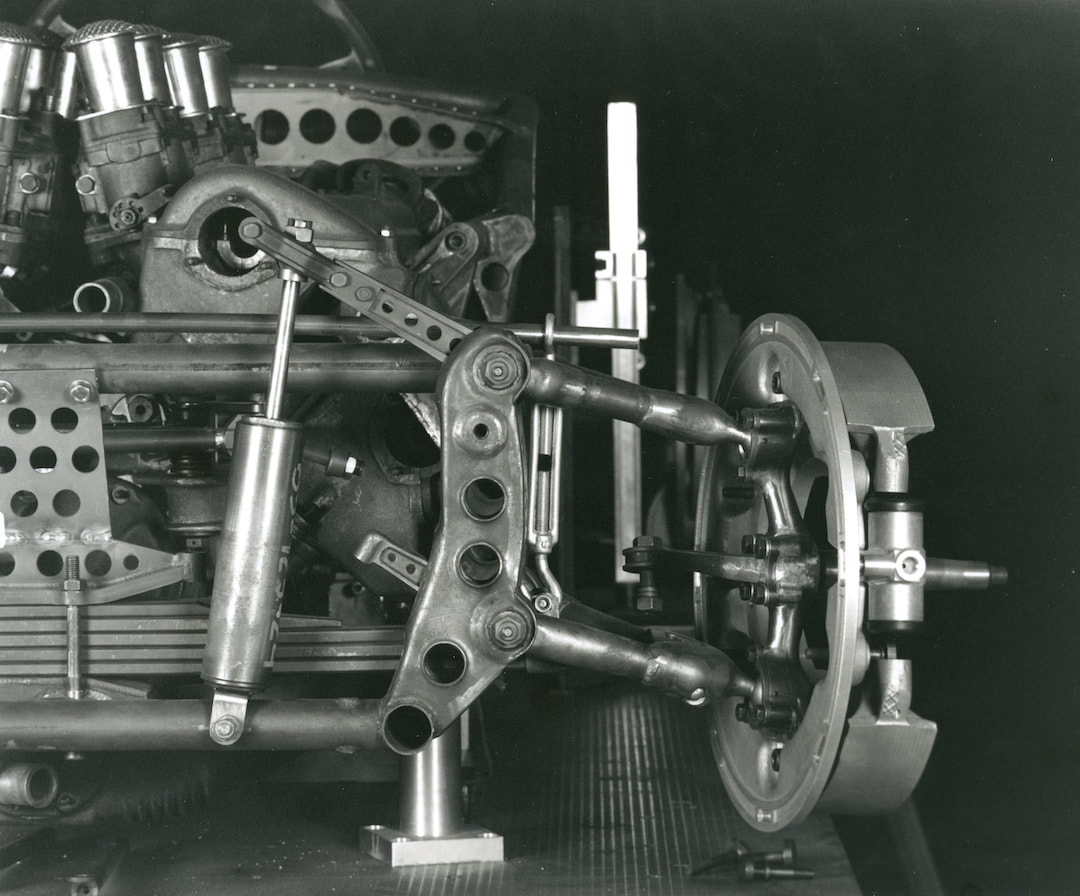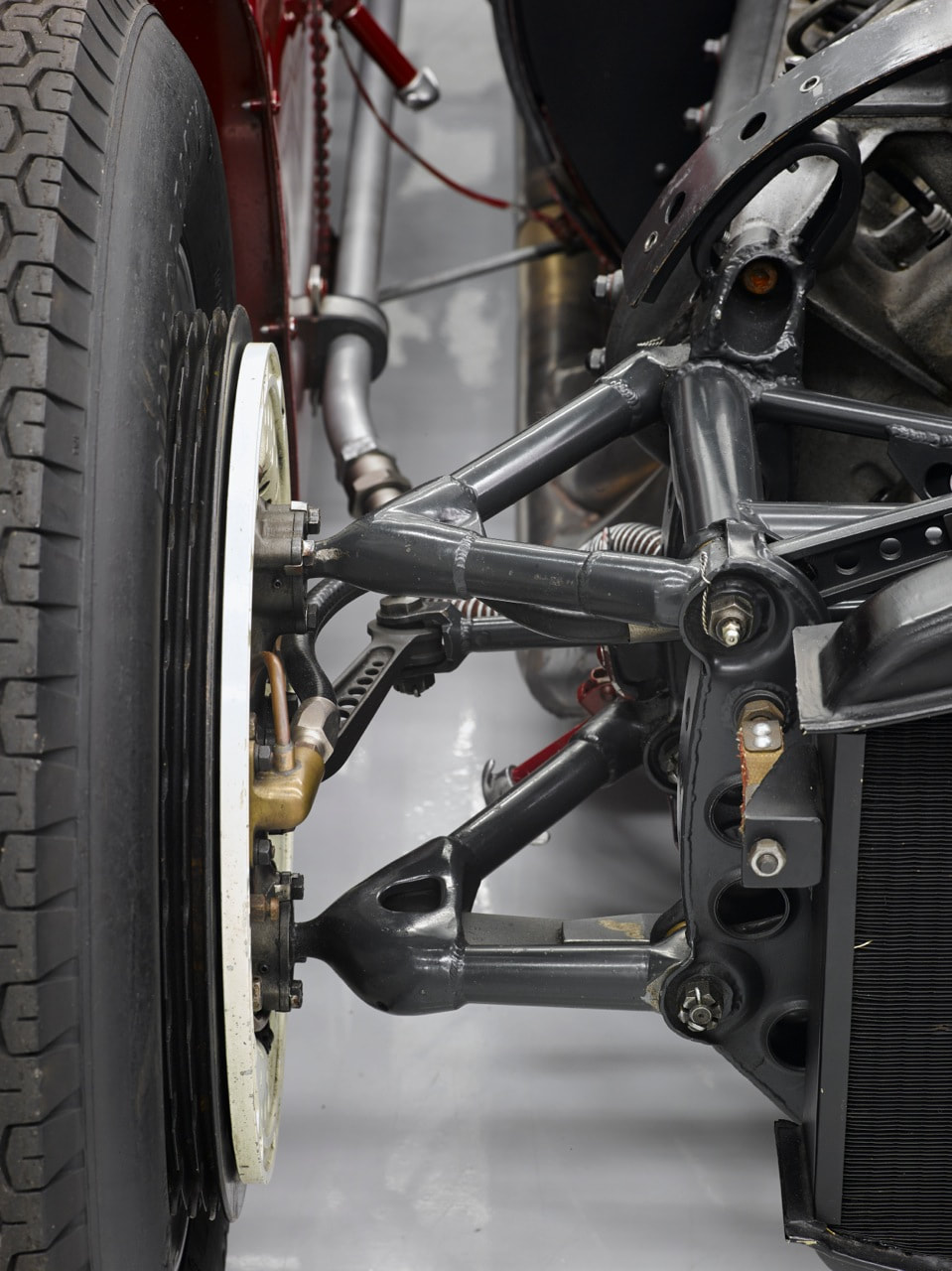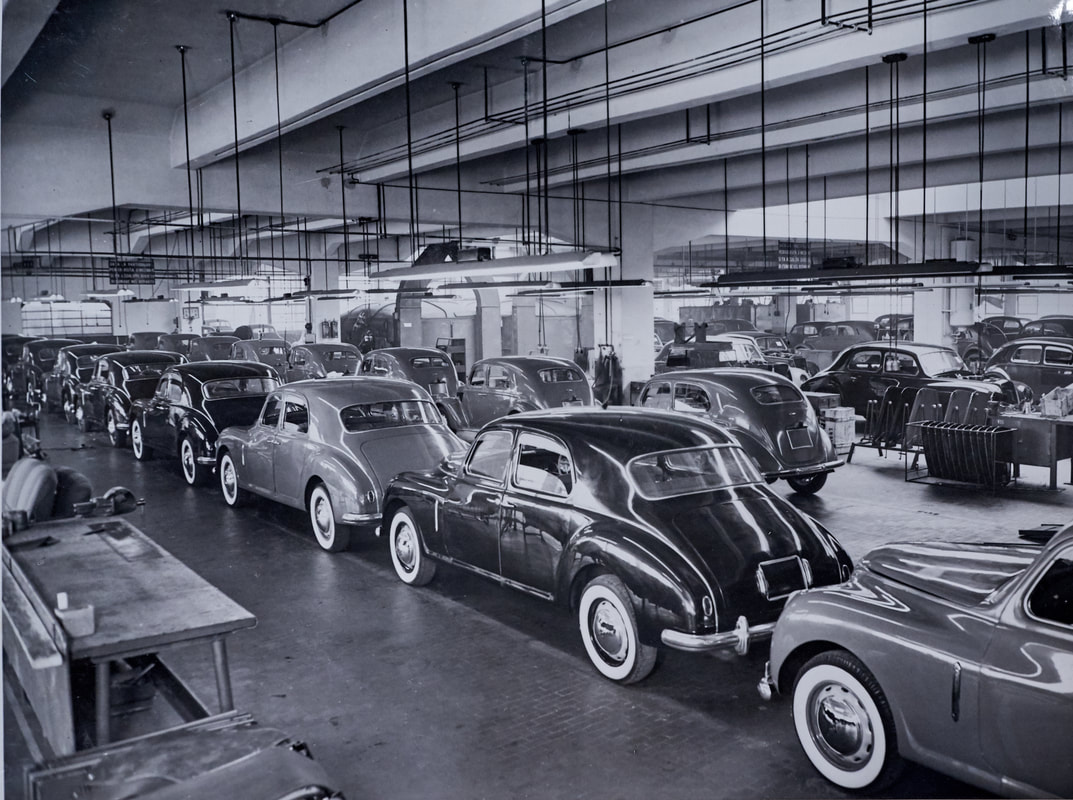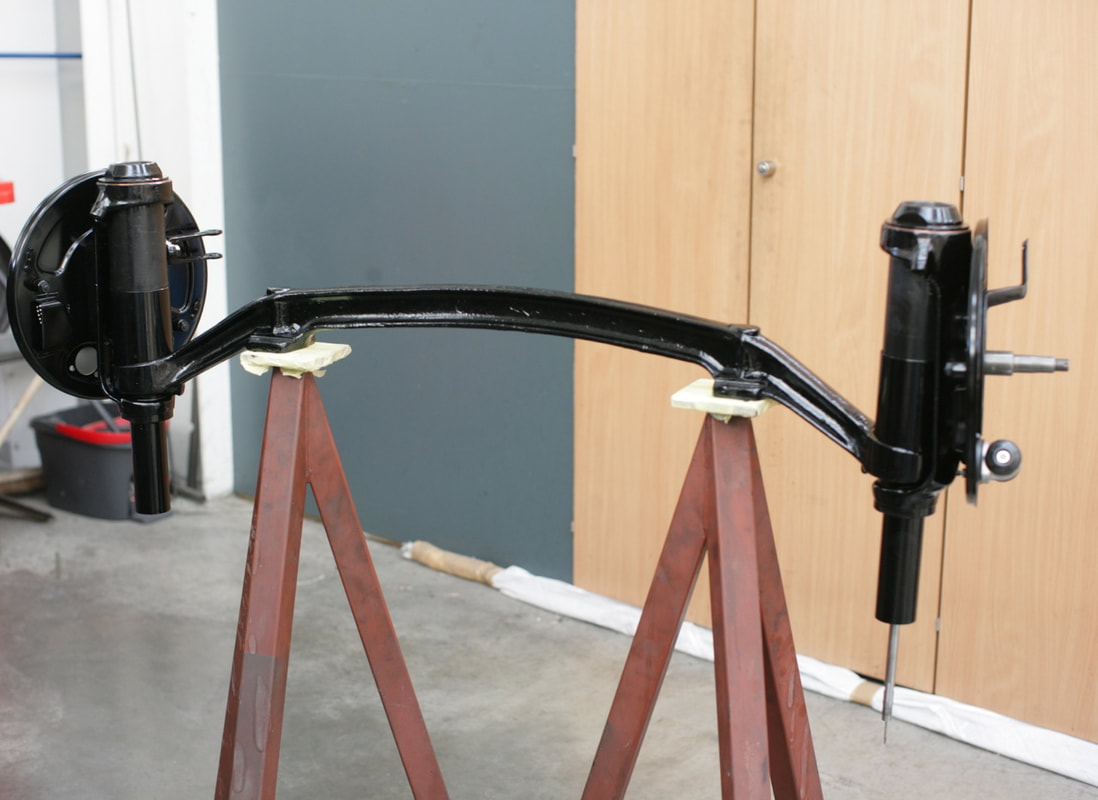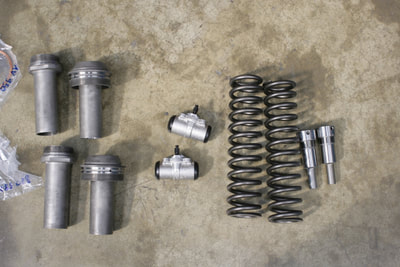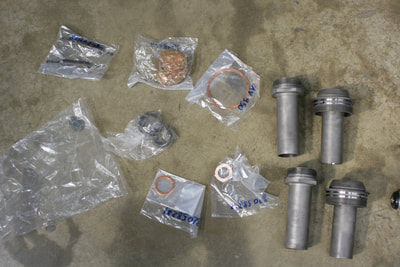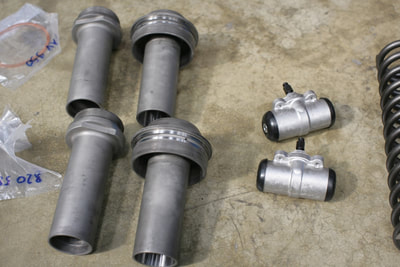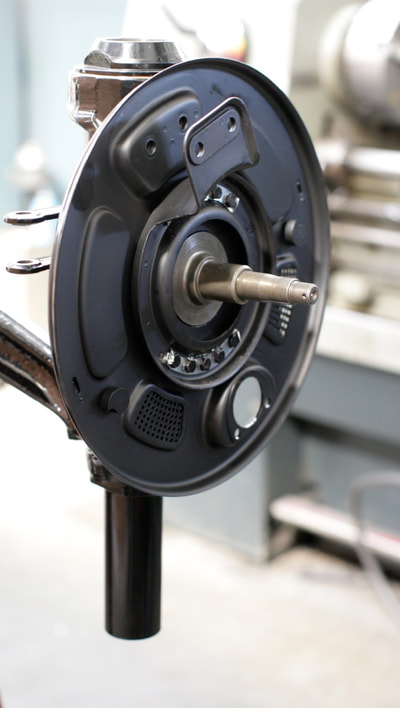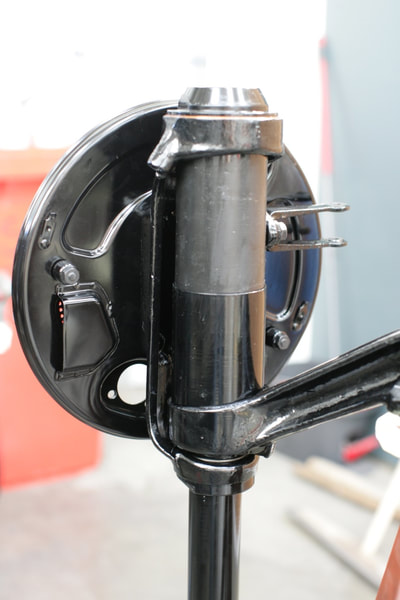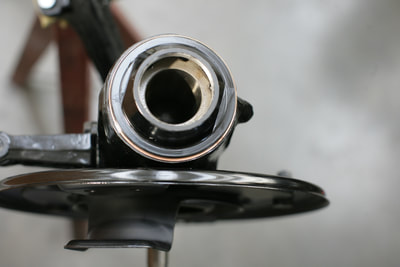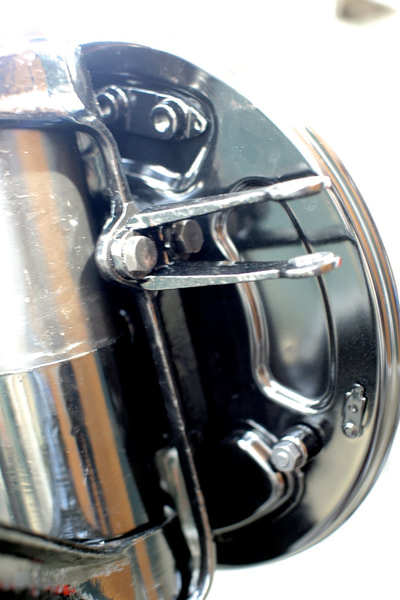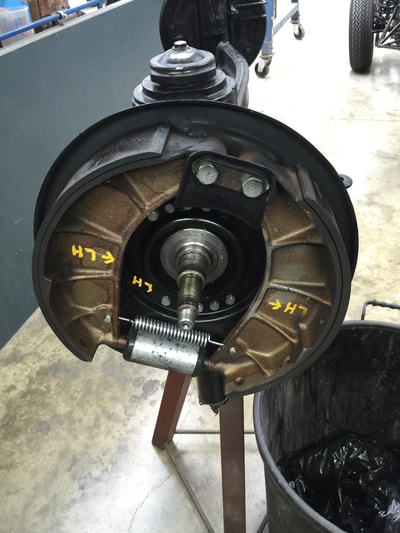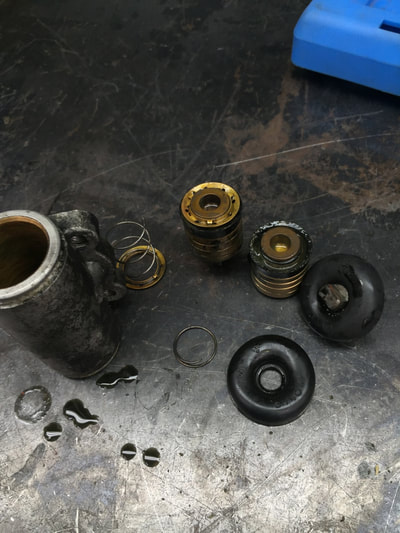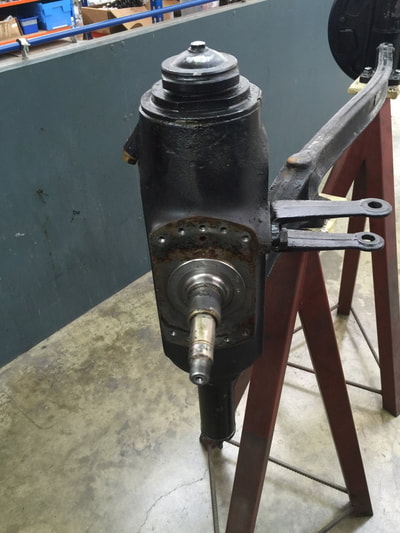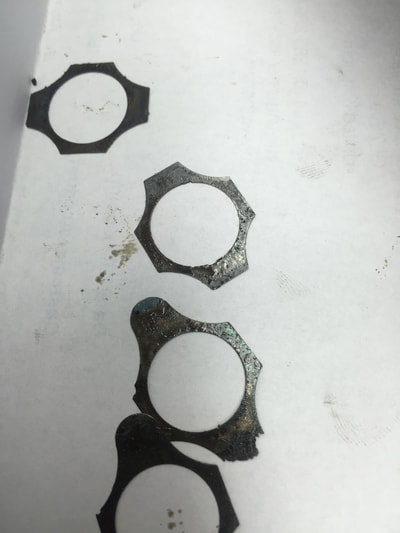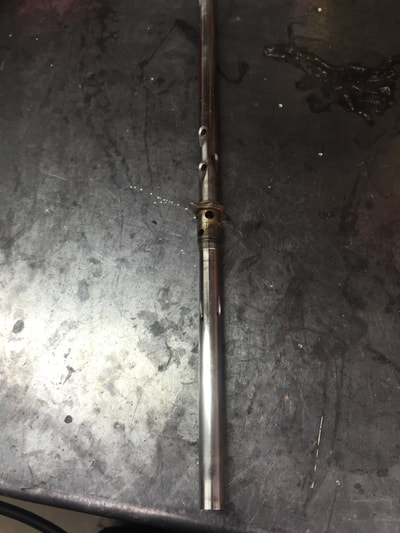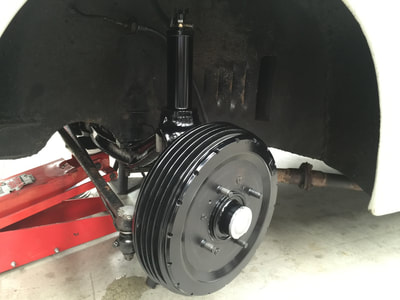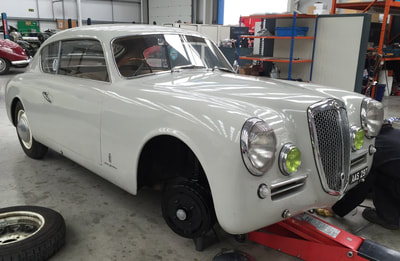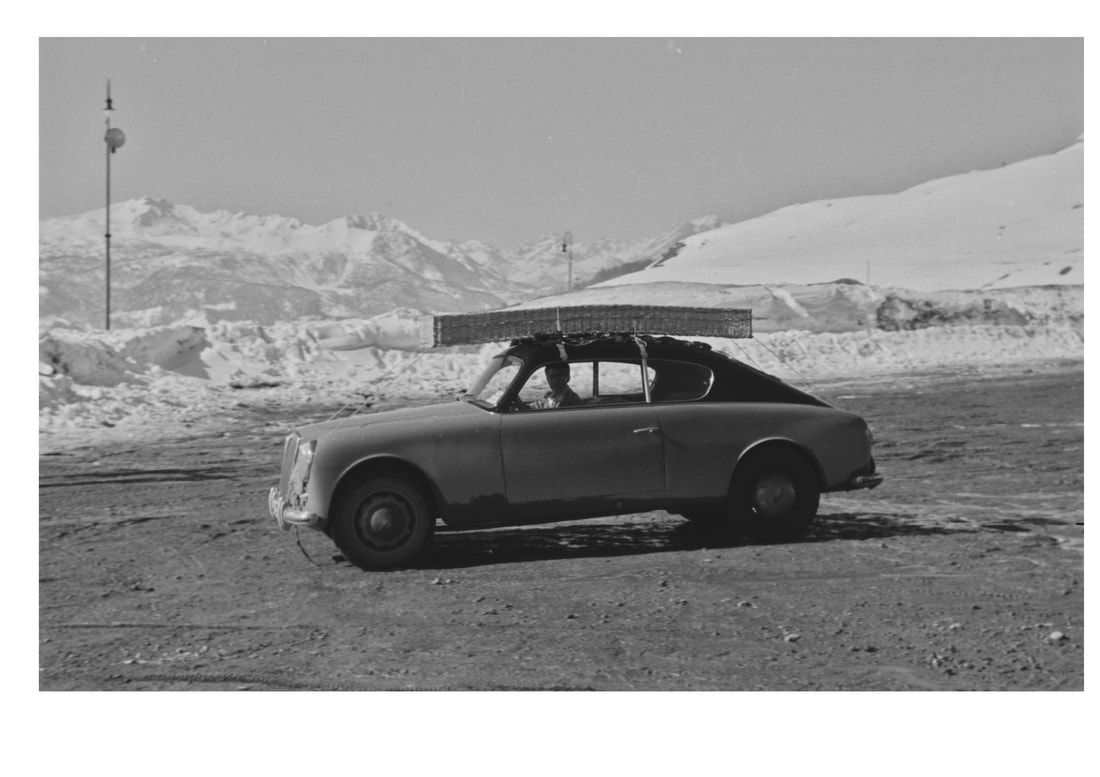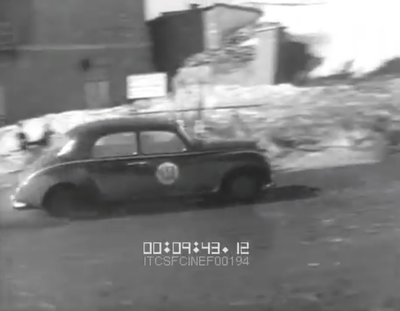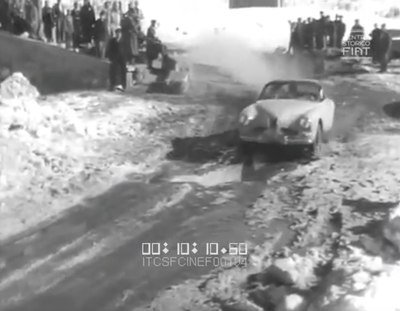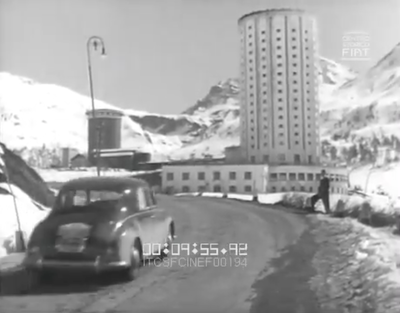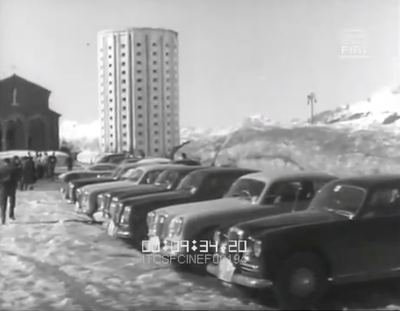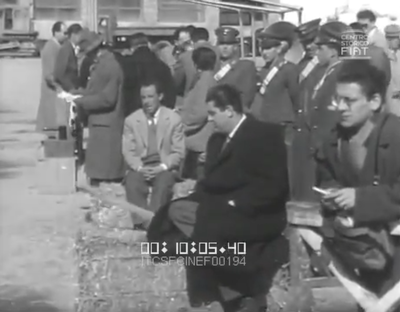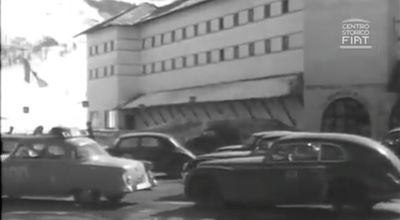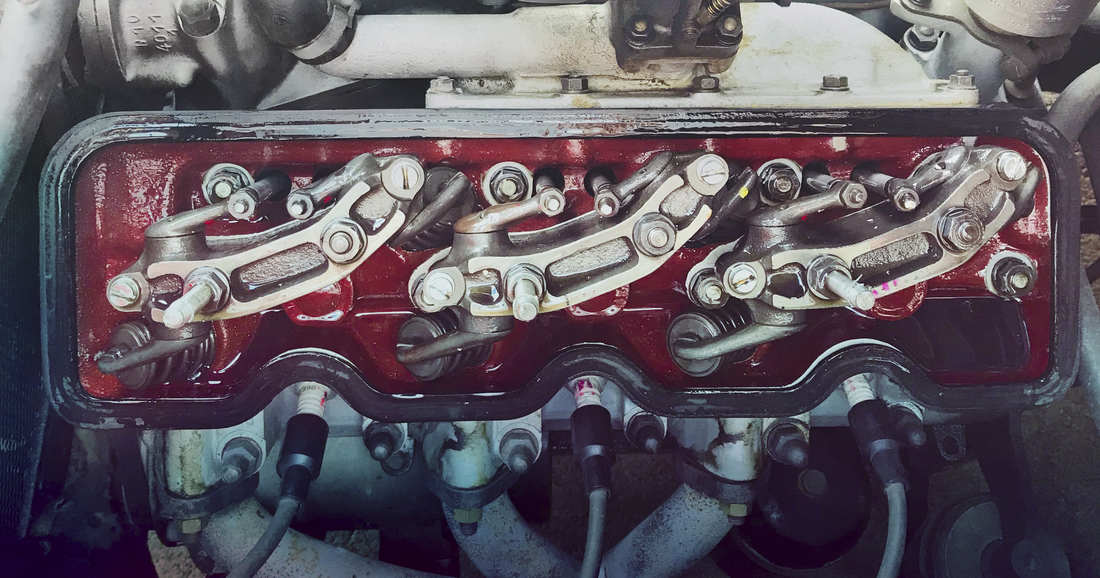|
Still trying to figure out how to list blog archives, but here is a start (I think): Archives May 2020 A while back, Luigi De Virgilio and I undertook to figure out how Lancia balanced their crankshafts for the V4 engines. It took a couple of years, and a lot of work, plus deep insights and guidance from John Cundy. Needless to say, it was written up, but...its not quite good enough. Probably have to finish this up (yes...). In the meantime, here's a teaser: part of the work included 3D models of all the V4 crankshafts. And once you have the model, why not make a print?
March 1 suggests spring is here. We know that it may snow tomorrow or that the weather is fickle, but for the day it was 55 degrees, and clear. So starts the ritual of getting the B20 up and running, after some months of slumber. Pull the air cleaner, prime the carburetors with electric pump, a bit of starter fluid, and it starts! I'm not sure why, but my B20 has a rough cold start, usually 3 cylinders or so for a few minutes. Maybe the compression is a bit high (9:1) or the early Weber single barrel carbs, and no choke. But start it did, and after about 10-15 minutes of warm up, off for the first drive of the season.
Normally a bit wary, as the car has been sitting, can be stiff, even a bit disappointing perhaps. But not this time: the B20 (as usual) read the mood, and decided to be absolutely flawless: brakes, suspension, engine, everything worked just as it should. No creaks, rattles, or anything off. Just a lovely 20 mile drive down the shores of Lake Michigan, amid traffic, but also some good speed work. What a great car - hard to imagine how it was at the time. Like a lovely violin - just on note. And a big thank you to the wizards of Turin. A glorious display of the Aurelia recently opened at the MAUTO, formerly the Biscaretti and now the National Auto Museum) in Torino. Called 70 Anni di mito senza tempo (70 years of myth without time), the celebration of the Aurelia opened with a press conference on Jan 30, and a public opening the next day. Eighteen cars are on display (including all 6 series of the B20) and much rare and interesting material. The show was curated by Massimo Fila Robattino, who noted that the Aurelia can be considered “un momento magico nell’evoluzione dell’automobile”. Talks were given for about 400 attendees, with presentations by Francesco Gandolfi, Cesare Fiorio, Luigi De Virgilio, and Mike Robinson. Aldo Brovarone (now 94 yrs old) told of work at Pinin Farina in the 1950s. Significant members of the Italian automotive community were also in attendance, including representatives of the Pininfarina family, the Pirelli Foundation, and the Lancia and De Virgilio families. For more information, see Motori Quotidiano with details on each of the cars: motori.quotidiano.net On Youtube: youtube Some of the press, including articles in La Stampa:
Shots from the show, taken by Giorgio Perottino: The cars presented:
Over time, one begins to recognize the different Lancia groups around the world. With luck, sometimes there is a chance to visit some, each with its own character, strengths and individuals. I first became aware of this early on: there were few Lancias in Chicago, and all wisdom was elsewhere. Parts were in Pittsburgh with Tom Sheehan, his parts manager Walt Spak, and restorer Bob Williams seemed to know just about everything. Algar, the official importer and parts supplier at the time (this was in the early 1970s) was in Philadelphia. East Coast reunions were an opportunity to meet the Lancia gurus from Boston to Virginia, including Howard Moon, Michael Miller, and Armand Giglio. A trip out west revealed another world of Lancias, with two centers in California, one around Los Angeles, the other north, around San Francisco. This all made sense, with America as a land of two coasts (with winding roads) and a large flat middle.....
Other centers became known, first was the wonderful and unusual world of English Lancias, with the Cliffes of Omicron, Nigel Trow, Ron Francis, Paul Mayo, Roland Grazebrook, Tim Burrett and others. These folks have been into Lancias for decades, and their knowledge is deep. Next found was in Italy, both more full and yet oddly more disconnected. I had spent time in the 1980s meeting Basso, Maglioli, even Carlo Chiti, but a deeper understanding of the Italian communities came while doing work on De Virgilio. There were vastly different groups, in Torino, the Veneto, and Rome, just to name a few, and they didn't really communicate with each other very much. The Sliding Pillar Rally, held on alternating years in England and northern Europe, brings together members of the Dutch, Belgian, French, German and Scandinavian countries. Recently, its become clear that the Dutch have their own community, anchored in part by Wim oude Weernink. The German group has some clear strengths as well, but is largely unknown to me. The center for Augusta owners might well be Belgium, with some 10 or so Augustas there, due to the van Hooricks. Lambda owners know well the Australians: some 17 Lambdas were at Castlemaine this year, and Bill Jamieson's book, Capolavoro, played a part in that. Recently, the Lambda work by Joachim Griese, Bill Jamieson, and more recently, Sebastien Simon, has effectively pulled a world-wide Lambda community together. When they started they thought perhaps there were 100 Lambdas around; now there are some 400 involved. There is a very active Lambda community in England, and they regularly trek to Fobello for their significant and sizeable reunions there (one coming up in 2021). In the US, Fulvias are well represented by Ed Levin in Los Angeles, who promotes, defends, and explains the brand on the internet with fervor and dilligence. As Fulvias are still affordable, there is still broad hobbyist interest in them. Aurelias are more awkwardly placed - too complex, and now too expensive, for the casual hobbyist, many have found their way into serious collections but are not part of the current internet chatter. Support for Aurelias exists around the world, but is scattered: the Italian-based Registro serves largely only that community; others find support locally. The English are well served by Thornley Kelham, Omicron, and others. In the US, Aurelia knowledge is dispersed, not centralized, with California still having a reasonable support system; the east coast likely gravitates around Dominics, a shop in NYC. Recently a few have surfaced in Chicago, likely due to Giovanni D'Avola's good service and my own talking them up. Support for other models varies whether before or after Aurelias. The Aprilia community stays in touch with each other; there's likely an Astura support group somewhere. Flaminias and Flavias can be worked on by knowledgeable garages, and parts can be found, so perhaps they have less group support than other models (although Facebook is now having marque groups with some success, to foster world-wide communication). All in all, there is a good wide base of Lancia interest and support around the world; parts come from Cavalitto in Italy or other places, but with the internet and email, communication has never been simpler. What is missing is any central support system for these cars. I'm not sure what that means, or what it would look like - whether its based on parts, people, models, or places. I just thought it worthwhile to list a few examples of our different groupings and connection points. Comments are welcome. PS - a friend offered the following thoughts: "People are key, and for each car type they form a community (local or global, depending on their interest and level of faith). Consider it in terms of a religious metaphor:
Not a bad metaphor, even if terribly non-PC.... From the Australian Lancia newsletter comes a link to this history of Stola, a wooden modeling firm in Turin. Located next door to Lancia, the two companies were closely associated from 1919 on. Stola made wooden models of cars, interiors, parts, etc. While we can't make a direct link from Lancia designs to Stola models to final product, their early photos give understanding of the early processes and workings at Lancia and Turin at the time. The link is a history page from 1919 to the present, quite long, but you can browse by decade. The early years are most interesting, but even later work on the Flavia, Alfa and Ferrari is fascinating. Thanks to Hannes Swaton for this.
https://www.studiotorino.com/en/st/history.htm Every two years the Australian Lancia community hosts a very large Lancia rally a bit north of Melbourne. It is a long way from Europe or the US, and one might wonder why would anyone go so far to see some Lancias? The event is different than one might suspect - first, there are a remarkable number of cars - this year there were 95 Lancias (!) including roughly 4 Kappas (one was a pretty complete chassis), a Trikappa block on display, and 17 Lambdas. Apart from some massive Italian reunion held every five or ten years, I think this is the biggest ongoing Lancia gathering. The Sliding Pillar rally in Europe (it alternates between the mainland, often Belgium or northern France and England) is almost this sizable, limited only (I think) due to accommodations. Yet Castlemaine has other attributes that make it special. There is a week long tour afterwards, and cars (yes, vintage Lancias) are arranged for the overseas guests to drive. As one of the organizers said, "the natives are friendly". Very much so. They have a guest of honor, to speak (hopefully with some knowledge) on some aspect of Lancia history to the gathering on Saturday afternoon (the weekend starts on Friday, extends to Sunday, the tour starting on Monday). I've had this honor twice, this time on the event of the Kappa's 100th birthday. The talk was attended by about 120 people, and went well. Of interest was such a full range of cars - practically all series of B20 were represented, practically every model from the Kappa on (Augustas, Aprilia, Ardea) with the exception of Artena and Astura (an Artena/Astura/Lince special in construction was seen later). And then there is the wealth of knowledge. There are several older members of the Lancia community (referred to by some as the Lancia royalty), who were more than happy to share their wisdom, including Bill Jamieson (Lambda historian), Peter Renou, Paul Vellacott (been around Lancias since the 1960s), John Doyle (in Turin from 1968-1978, key to Lancia findings from then, interviewed Falchetto), and others. Then there are the expert engineers, including John Shellard with his Kappa and Lambdas, John Brennan and Iain Simpson (Lambda), Andrew Torti with the earlier cars, and Andrew Cox and Noel Macwhirter (Aprilias). Add in a few overseas experts, such as Gerald Batt (all Lancias, especially Lambdas), Angela Verschoor (Flavia and Lince), John Milham (Lambda and Augusta), Sebastien Simon (Lambda and Aurelia) and Paul Tullius (too many to list!), and it's a pretty special group. And they all speak English! Needless to say a great time was had. Chris Long was generous enough to lend his lovely Aurelia B20 s.6 for us to tour in, so we were in good comfort - except for the afternoon when we chose to drive Iain Simpson's Lambda in the open air, blessed with sleet and rain. Well worth it, highly recommended. Nice people, good cars, lots to see and do. Time flies when you are there. Never enough time to talk to everyone. For the 70th birthday of the Aurelia, a big show is planned at MAUTO in Torino (formerly the Biscaretti) early next year. Organized by Massimo Fila, a longtime Aurelia owner, it will feature many cars, and much interesting information. I believe there is a cocktail party for Aurelia folks for the opening - which I think is February 1. Should be a great event! Please attend, or at least send a dozen of your best car friends....
Early Aurelia fasteners, used for interior trim work, are quite difficult to source. There are a surprising number of them. Using the correct ones separates a proper restoration from the others.
William Corke has put together a list of those used in the B10, likely similar to the ones used for other Aurelias (early B20s, possibly B12). While some of the sources are likely out of date, the information is worthwhile and detailed. His spreadsheet can be found at the bottom of this page: Parts Was up for a short visit to Elkhart Lake for the vintage weekend in September, stayed at a small B&B and parked next to this American icon. A 1965 'Vette Stingray, belonged to the same couple since 1971. They used it as a daily driver, painted it themselves. The car was gorgeous, even had a luggage rack. And had a lovely drive home on Saturday morning. No stress, winding roads and Wisconsin countryside at its best.
Recently uncovered in Holland is this absolutely lovely Astura Ministrale, a stretched body on standard mechanicals. Its mostly all original, paint, interior with the roll blinds, electrics and and mechanicals. The details are fantastic - bakelite knobs, wood trim, alloy bonnet and doors. Then there are the details - holders for small accessories on the sides, map storage, etc. Just a wonderful period piece... Timing the cam on the Aurelia can be a bit challenging. The factory method, as outlined in their data sheets and found in the Aurelia manual, sets the timing from the point of opening and closing on the lobe (typically no. 1 intake) and places the cam a certain distance from TDC on the crankshaft. This is not an uncommon approach and was used by other manufacturers of the time, but its not one recommended here. The problem is that many cams have been either remade and reground, or made anew, and its not clear that the beginning point of action on the lobe is at exactly the same point as on the factory original. And a little variation means a lot. Another way is outlined by Martin Cliffe of Omicron, and can be found in the Aurelia workshop manual (see Paul Mayo for your copy). This method is used more commonly today. Cliffe's excellent writeup outlines all timing issues on the Aurelia, with the first part relevant here. He outlines how to set the timing from point of maximum lift of the lobe - the "Maximum Opening Point" (MOP). Imagine a symmetrical lobe, with its central axis as the point of MOP. That then is located against the TDC by a given degree distance. Giovanni D'Avola, was rebuilding an Aurelia engine at Autosprint, his shop in Chicago. He has worked on Lancias, Ferraris and all Italian cars for years. He source a new cam from Cavalitto, and to set it up right, the following process was used: 1) find TDC. Done with a degree wheel and measuring the top of the cylinder. Degree wheel zeroed for TDC. 2) find central axis on lobe by measuring from both sides of the lobe, that is, bracket the central axis. 3) keep chain taut using a chuck in the tensioner. Also rotate in one way (clockwise) so the chain doesn't back off as this can distort the readings significantly. 4) locate lobe centers for both intake and exhaust for one cylinder. 5) place Intake MOP after TDC per formula (see Martin Cliffe article for figuring). For this cam, Intake MOP was 120 degrees ATDC but only for this s.5/6 cam, it is different for other cams). If cam timing is unknown, the cam can be placed by determining a middle between Intake and Exhaust MOP, and placing this middle at a known event (such as TDC of the compression stroke) when both are equally closed. Check with your own cam folks before doing. 6) the results were checked by mapping the opening and closing points for intake and exhaust valves, and comparing these with the factory settings noted from the beginning. Its not so important the opening/closing points be exactly the same (as these points vary depending on clearances used), but rather that lines drawn on the degree wheel between opening and closing moments (both for the factory settings and as observed) are parallel. See drawing below (done by Charlie at Autosprint) for both intake and exhaust - all very good. In the end, its all buttoned up as the engine is close to running. and here are some of the cars at Autosprint:
If you are reading this, can we agree on a love of Lancias? Mine started with my parent's Flaminia about 45 years ago. Over the years, its matured into Fulvias, and then back to Aurelias. The Flaminia and Aurelia share the basic design of a V6 and a transaxle with either IRS or de Dion rear suspension. I’m fond of the basic concept of neutral weight and a lovely chassis. But there’s always been this wondering… could it be improved?
What would change if it were updated? One thing is more power - Thornley Kelham have been doing this by updating B20s with Flaminia engines. But what about the rest of the chassis - how about up to date brakes, better synchros…. What would say if someone made a similar chassis, similar but updated drive-train, with more power and good weight? Throw in some modern conveniences, is anyone tempted? At the risk of upsetting Lancia friends, yes, I was. So the Aurelia and Appia got a new sister. When is an Alfa not an Alfa? Let's look at a Milano, from 1988. Maybe Alfa made it, but its not really part of their 4 cyl DOHC DNA. Rather, its much closer to the Lancias, its really an updated Aurelia/Flaminia - 60 degree all alum V6, de Dion transaxle, guibos in the driveshaft. And disc brakes that work, easy shifting, power steering (lovely), AC (necessary where I live), only 2900 lbs (lighter than a Flaminia Zagato, more power and less than 1/10th the cost), wishbone front suspension, Recaro seats, parts easily found, and cheap in the US. OK - its not the most gorgeous thing in the world, but the Verde (75 in Europe) has the hotter 3 liter SOHC motor, with 190hp. It has lovely Lancia-like pushrods and rockers with its overhead cam (very clever), electronic injection. And... you can upset everyone. The family thinks why do we have this? Alfa people say its not of the spirit, Lancia folks think you've gone daft. But friends get it - it has a sophisticated chassis, easily fixed, all top caliper underneath. Take it out for the day or the weekend, and come home rested and with energy left over. The upper part of the car practically wants to fall apart if you look at it, but a one owner car with 65k miles has everything working and staying together for now. When something falls off, you tap it back in place. Its built simple and fixed easily. There are other ways to go daft:
We've all appreciated the beauty of the shop, and the people who work on the cars. Sometimes we might think them as saviors, keping our beloved machinery going; othertimes, we surely are frustrated, and wonder who and why things are the way they... sometimes are.
While the range of emotions goes from high to low, I never thought to make much of it, rather to simply share with fellow car buffs and gear heads. But could there be more to it? Might these ups and downs have a classical sense to them? It took a Chicago photographer Freddy Fabris (whom I don't know) to make the leap. And what a leap he made - redoing Renaissance images with modern heros, mechanics. The meaning is overt, but the settings, the lighting, the colors are lovely. OK, it might upset some, but lets just enjoy and have a good laugh together. popularmechanics-mechanics-renaissance-paintings/ The original rods for the early Aurelia engines are worthy of replacement. The conrods were originally sized for the 50hp 538 engine designed in the 1940s, and were unchanged in the early Aurelias. Perhaps adequate for a B10 berlina, they really aren’t up to a hard driving B20 s.2. As an example, my car was taken off the road in 1963, with a rod through the side of the block. It seems conrods were a problem back then too.
When Walt Spak rebuilt my engine in 2010 he commissioned new rods from Cunningham on the west coast. They worked closely to get the rods correct dimensionally but also strong. New rods will require rebalancing the crankshaft, as the reciprocating weight for the piston/rod assembly is now greater, it is also important that the rods all match in weight closely. The new rods involved a few other changes:
FYI - I'd recommend looking at the valves too, especially for s.2 engines.Beppe Regazzone once told me that the s.2 valve stems were the same diameter as the earlier motors but were made longer for the new head configuration, and susceptible to breakage. The factory went to thicker stems in the s.3 motor, we made new SS valves. Back in 2004, I did a booklet on Aurelia camshafts, trying to figure out all the different camshafts Lancia used on Aurelias. Since then, better information has been found, and these findings have been condensed on this webpage, which has goodies for any cam junky. (updated 2.10.2019): Camshafts
So what was Nardi's role in Lancia's early Aurelia competition cars?
Nardi had been a friend of the family (primarily of Giovanni Lancia's son Massimo) in 1930, and knew the Lancia cars well. They were going to go to Modena to work at Maserati, but Massimo's untimely death in an airplane crash in 1932 put an end to those plans. Nardi went anyway and became Ferrari's driver, and worked with him for many years, into the 1940s. At that point, he returned to Torino, and started making his own particular cars and products, including twin carb kits for Areas and Aprilias. His shop was located close to Lancia (I believe across a courtyard) and in the early days of the Aurelia, he provided tune-up services for the factory and later for privateers. First off was a double carb kit for the B10, then another for the B20 s.1, used in the Mille Miglia of 1951. Two further kits were made, one for the B20 s.2 (same carb, different manifolds, as Lancia had changed the heads), and the 6 carb dell'Orto solution (done in two versions). Of interest is the evolution in these early years at Lancia, where initially the expertise comes from Nardi, and then quickly (starting end of 1951 and into 1952) Lancia gets more seriously interested in racing and engine development, and takes over the tuning of their cars. The high point here is De Virgilio's design for a four carb setup (single Webers) used in the s.2 Corsas. This kit may well have been cast by Nardi, and it showed up in his 1952 F2 car, powered by an Aurelia engine, supposedly to the disgruntlement of Gianni Lancia, who did not like factory developments showing up on someone else's cars. Nardi continued to make further kits for the Aurelia, most notably the one for the 2.5 liter engines, used in B20 series 3 to 6, and would also be fitted to some B24s. The relationship between Nardi and the factory remained close - there is one example (I think either s.3 or s.4 B20 motor) that is taken out of a new car, refitted by Nardi with his hot cam and twin carb setup, and then tested at Lancia and then refitted to the car. Not sure who was responsible for what in that interchange, but the customer was likely very happy to have this all done for him. In each of the Aurelia heads, manifold passages are changed to improve breathing, and these required different setups from Nardi - the number boggles the mind. There were six different heads, and the number of combinations of heads, valves, cam and carburetor are somewhat bewildering (ref: pg. 295 in the book, shown below). Nardi was assisted by Gaudenzio Verga, likely designging the breathing enhancements. Verga was an old Lancia hand, coming to Lancia in 192. Prior to that he had been at Chiribiri in Torino, making 4 cylinder race cars from about 1910 to 1927, then joined Lancia and was with them into the 1940s, before migrating to Nardi. For more detail, see Lancia and De Virgilio, At the Center (pg. 99 and following). The D50R was a short run of recreations of Lancia's Formula 1 car, made with original engines by Guido Rosani in Turin. Guido was the last direct link back to the factory race team - his father had been the architect for the Lancia company, and young GUido (at about age 10 or 12) spent some of his youth running down the aisles in between the drafting boards. He knew Lancia history better than anyone else. I was lucky to spend time with Guido while visiting Torino and working on the De Virgilio book. Guido appreciated my love of the drawings (he was a skilled draftsman himself as well as fabricator), and wanted his picture taken by his drawing board. We looked at the drawings from the 1950s, from the B110, D20, D24 and D50s, all of them, over the years. He shared with me a book on his father Gino Rosani, privately published by Pininfarina in his honor. Gino had worked closely with Gio Ponti on the Lancia building, a very interesting 1950s design. This picture of the D50 construction is of the front suspension, with double wishbones , a lower transverse leaf spring and remote dampers. It was taken by Nigel Trow, another good friend of Rosani's, as Nigel had the chance to watch the cars be made. He wasn't the only one - one day Gianni Lancia came into Rosani's workshop, to check on his projects as well. Rosani made both D24 and D50 cars - only using original engines, but making much of the rest up, with help from many in the industry who were familiar with the cars. The D24 lines were partially penned by Ercole Spada, formerly of Zagato, now retired - another one from Guido's deep Torinese network. The cars were made meticulously, with even the rivets in the gas tank per the factory drawings, where no one would ever see them. He was quite proud that he followed the drawings carefully. There has been discussion (especially in the British press) as to how much was done by Rosani, and how much by Jim Stokes, who fettled the cars once done. While Stoke's work was invaluable and very well done, the real construction was in Torino, as shots like this make clear. Here is a later shot of the D50 front suspension which I took of the D50 in the Revs collection in Florida. Just lovely workmanship.
Oh to be at Lancia in the early 1950s. I'm sure it wasn't all wonderful, but to be surrounded by so many Aurelias. The curves, the finish, the colors, and the sense that this was how things could be.
Around 1980, I was in Los Angeles, and visited a grey-market importing operation for Lamborghinis. It was run by Jas Rarewala, an engineer, who was also interested in Stratos. We had a good time and he took me for a ride in a Countach, managing only 135mph on the expressway. What does this have to do with Aurelias? Not much, except I remember being in a storage area surrounded by 4 Lamborghinis. It was an extraordinary experience, as you could come around to "believe" that these cars were right, and the rest of everything else wasn't. It was a new way to see the world. When you see them in numbers, you begin to believe. Quite amazing. So the image of fifty or more Aurelias, all together, reminds one of how the world could/should have been - dedicated to quality, finesse, and elegance. A couple of years ago, the Collier Collection brought up their D50 to Lime Rock in Connecticut. Along with Peter Gidding's D50, it was a chance to see two D50s run together. Here is some video of the Collier car warming up - stirring to say the least! In 2016 - the B20 had a problem. The front suspension wasn't quite right. It had been rebuilt some years back, but the parts weren't available to do it right, and the suspension would "clunk" badly on one side with dips or holes. It made driving frustrating, as one had to steer around road conditions, and then brace for the inevitable which would only happen when least expected. On smooth roads it wasn't a problem. But I live in a city, and the roads are lousy.
The options were limited: the knowledge base on the suspensions is limited to a few people - and while the local mechanic (Gianni at Autosprint in Chicago) was fully capable - as there is little he can't do - what he didn't have was any knowledge of what parts might be available. It would be a first time effort, and the car would be laid up while the communication went back and forth to Italy. Who knows if all the right parts and pieces would come together? The suspension, while not too difficult, has bits and pieces. One thought was to send it to Italy - but there would be little communication possible about what to do - they tend to do what they think is right, and it would be shipped back. A fair amount of risk there. In the end, conversations with Simon Thornley and Wayne Kelham were quite useful. They were fully committed to doing a full rebuild, and had just completed two s.2 B20 front suspensions in the past year. The sliding pillar has some slight variations over its lifespan on the Aurelia, and so their experience with the s.2 was useful. So too, they had been in good communication with Italy, about what new parts were available. So Gianni and I pulled the front axle out of the car in my garage, put the car up on stands, and the axle on a pallet. After about 20 pages (and endless phone calls) the axle was shipped to Thornley Kelham. They undertook a full rebuild, doing a crack test on the hubs, and finding one of the steering arms needing replacement. They went deep into the suspension, found the corroded tabs (not functioning very well, source of problem), plus a number of very worn out parts. They got new ones from Italy, cleaned it all up, and put it back together, rebuilding the brakes at the same time. And just to be sure, they put the axle on Simon's own B20 for a road test. The axle came back about 2 months after I shipped it to them, and was fitted right to the car. And the transformation was total - the ride in the front is not only supple, but controlled. Its a level of finesse that is just lovely. I had thought the standard for a good front end was our Appia with 60k original miles, but this was even better. Its been now two years since the work was done, and all is good! Many thanks to Simon, Wayne, and the team at their shop. Job well done! A short video of the rally in 1953 in the Italian Alps. Notable is the scenery, the quality of the landscape, a number of Aurelias (and some Alfas too...) and a shot of Gianni waiting at the top. Great character, sent by Massimo Fila. Toward the end is some great footage of an Aurelia berlina bouncing along some rough roads.Other rally cars include a Porsche, several Alfa Romeos and Fiats, the roads and cities in 1950s Italy,. Thanks to Centro Storico Fiat. Heading up to Wisconsin for the vintage car weekend, I was worried with a loud ticking from the engine. The local mechanic (Gianni) pulled the valve cover and checked the valve clearances - which should be done on a cold engine. This one was hot, so it not quite proper, but we found two loose rocker arms, and were able to get them back to the specifications shown by the other valves. (On an average, seems the valve lash was about .05mm tighter than when cold, but that is just a guess).
Here is a shot of the rocker arms and the pillow boxes that hold them. You can see the pushrods up top in pairs, coming from the cam in the valley of the "V". Then the clever rocker arms, in pillow boxes that are angled, so that the intake valve is rotated about 45 degrees closer to the intake, and the exhaust valves are on the bottom, close to the exhaust manifold. This way of rotating the valves was De Virgilio's clever improvement, first implemented in 1952 on the second series B20, and then used for all subsequent B20 and B24 engines. This car has the two single Webers as standard (the one for this bank is visible) and a special tubular exhaust. Massimo Fila Robbatino sent two interesting items: first is a marked up early Aurelia brochure. Both weights (in kg) and costs (in lira and dollars) are noted for the different models. Good fun. Max also sent in a video of his B20 running around the Peloponnese in Greece. The B20 was running well and being used as a modern car. And the roads - without traffic - looked great.....Thanks!
|
CategoriesArchives
July 2023
|
||||||||||||||||||||||||||
